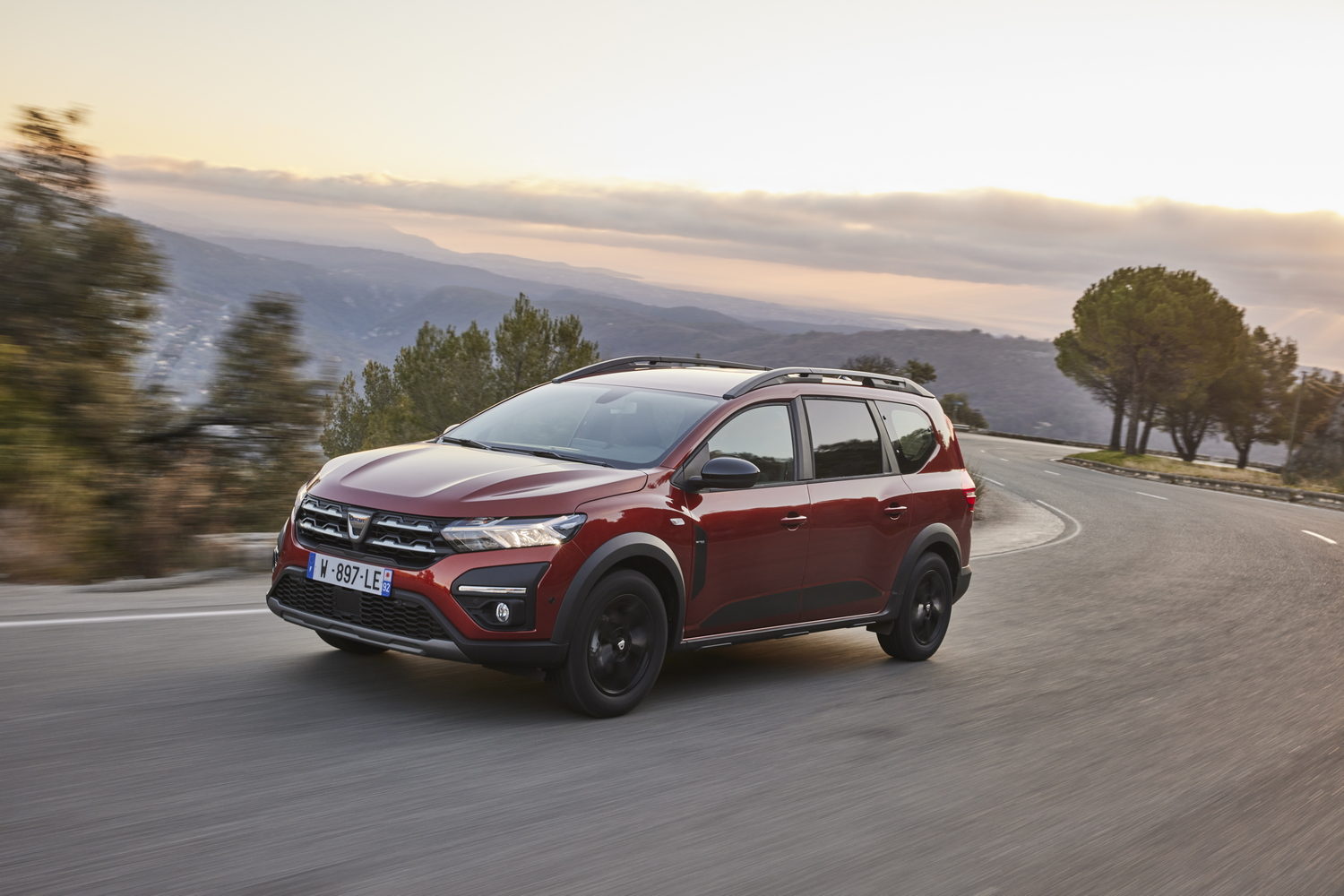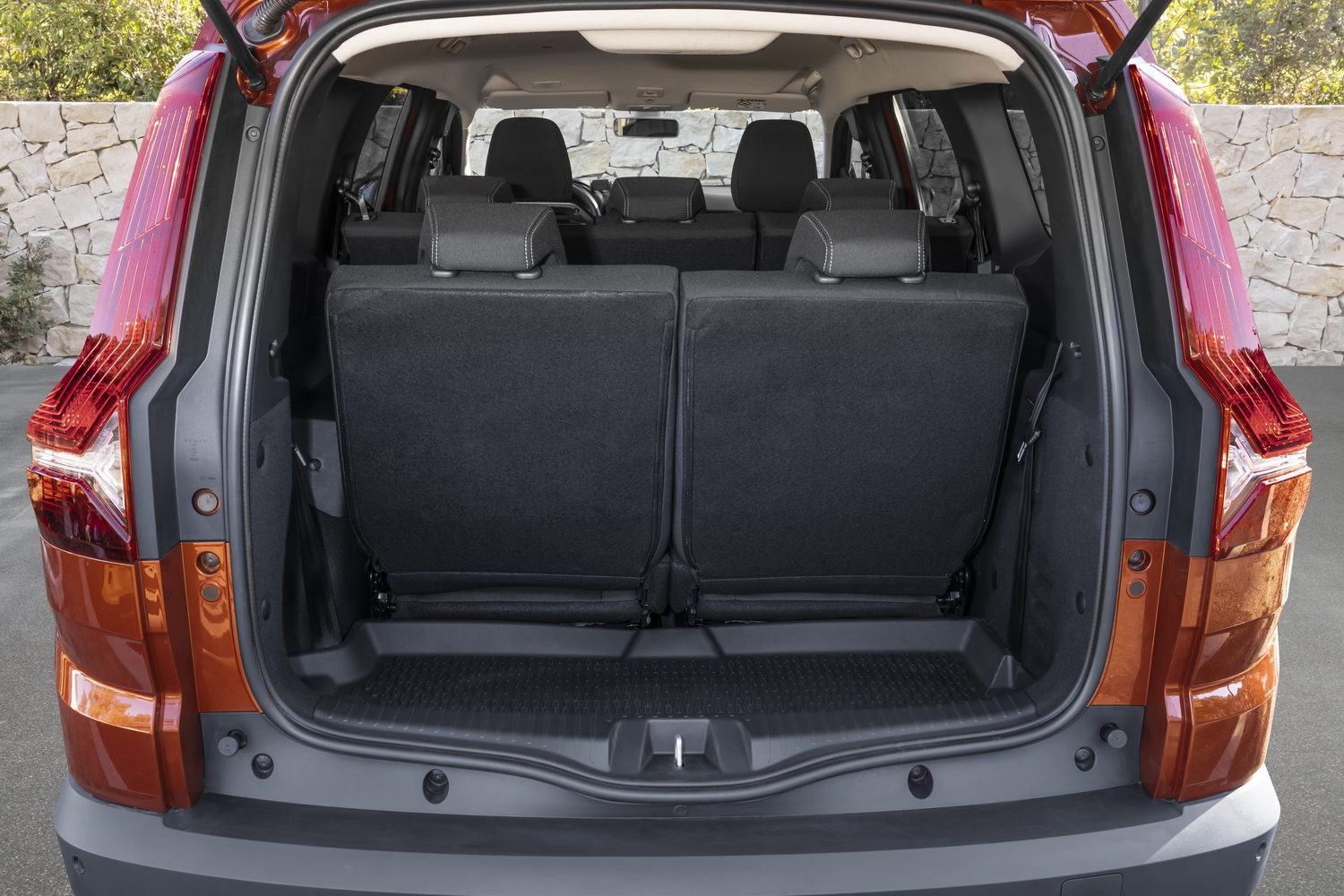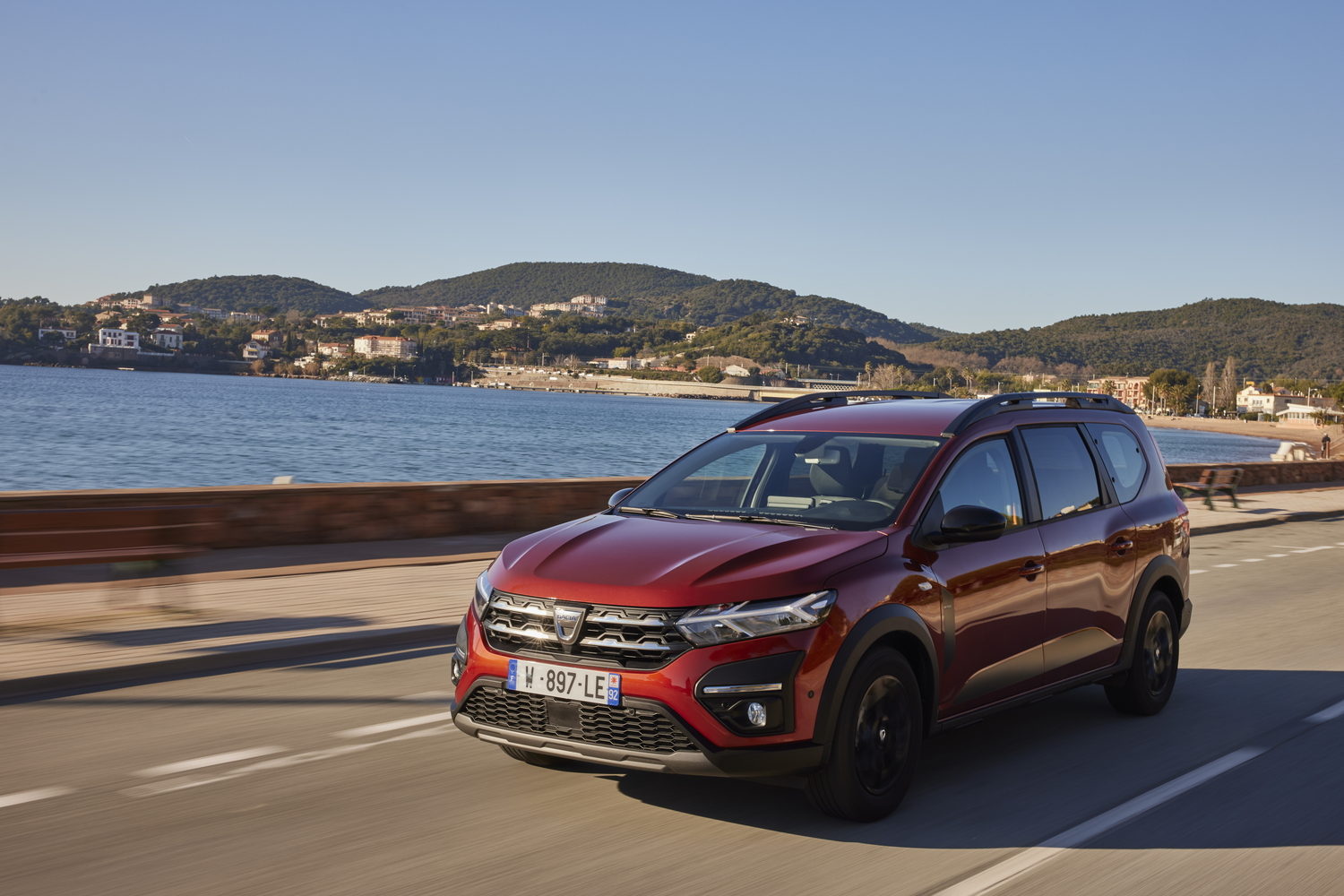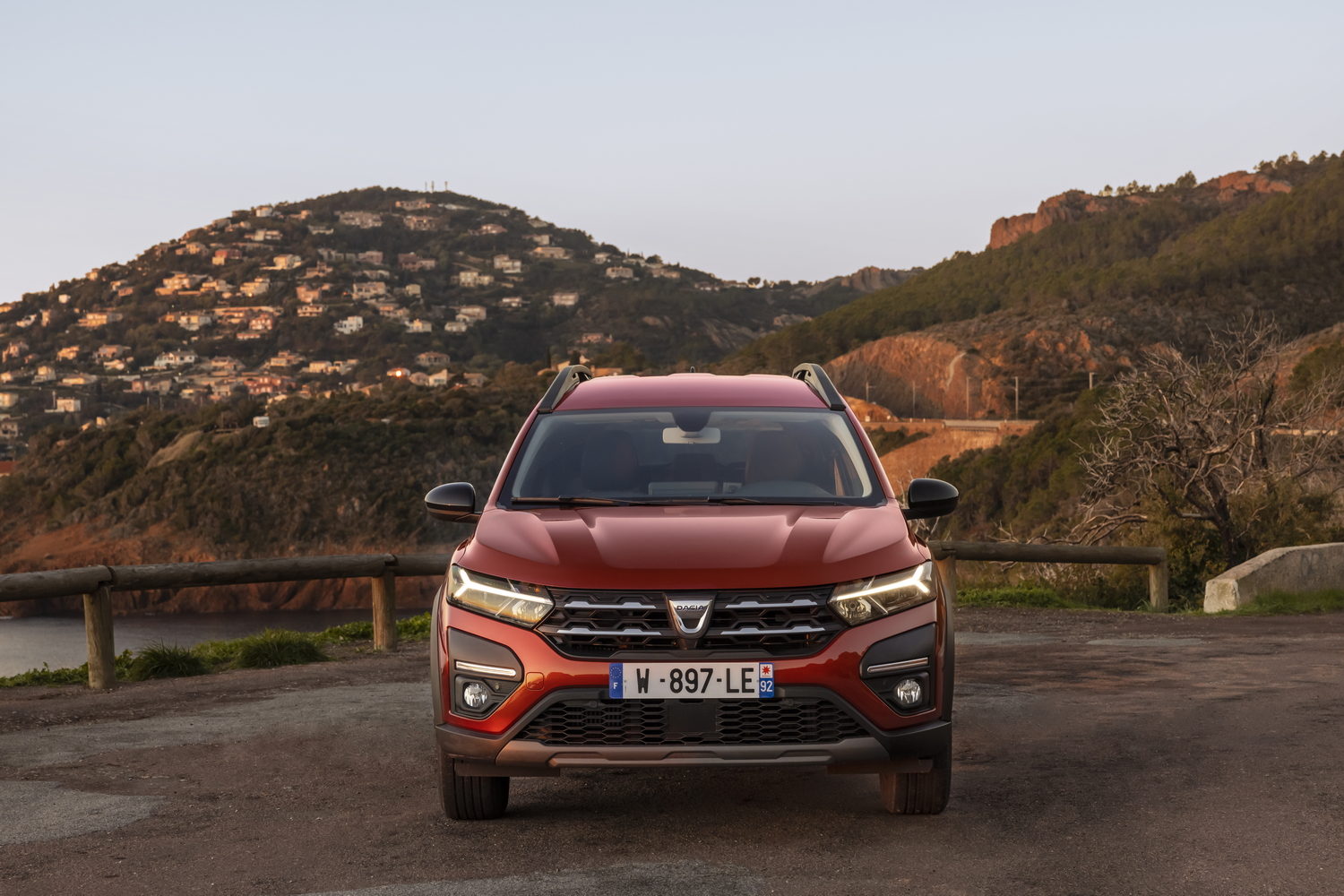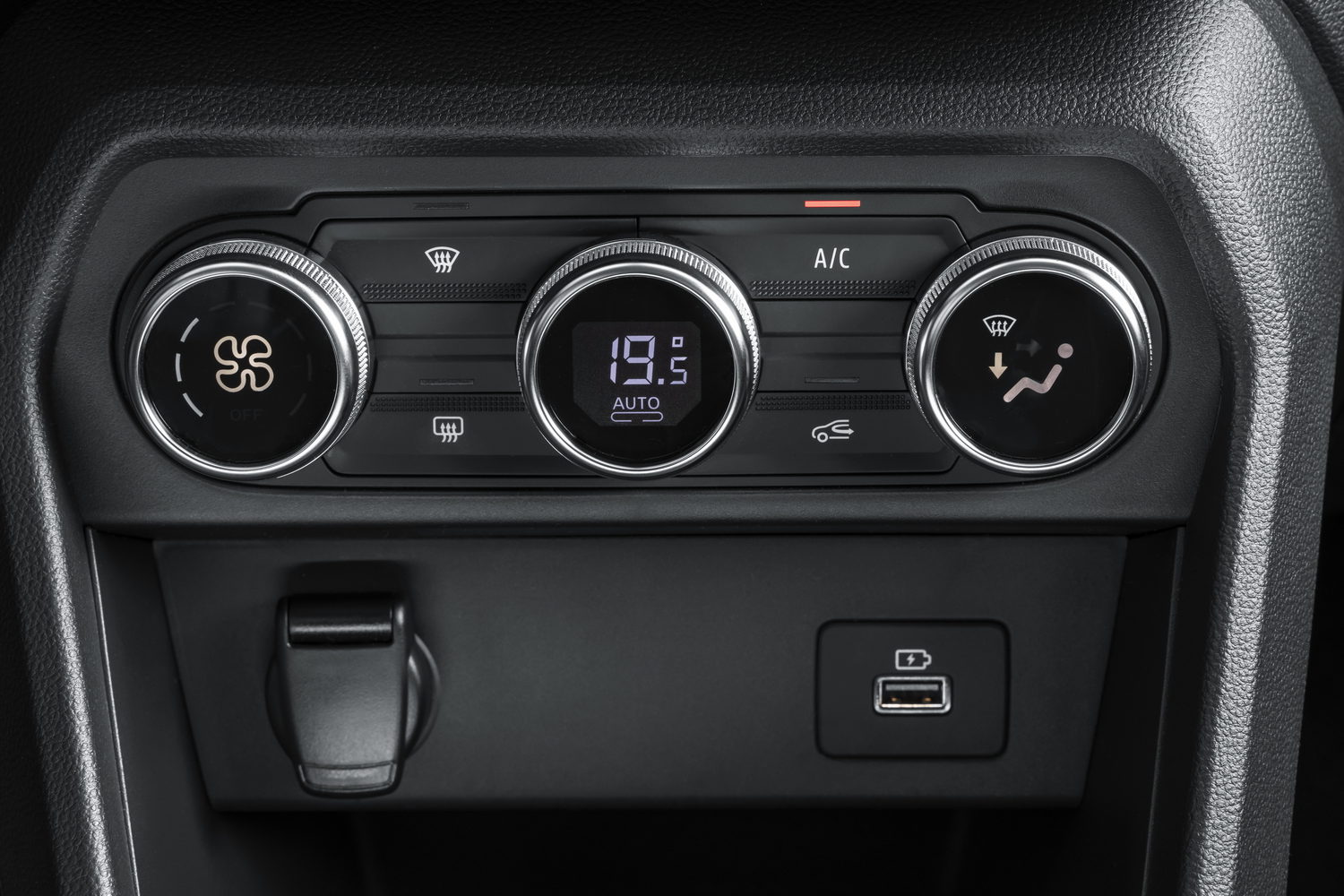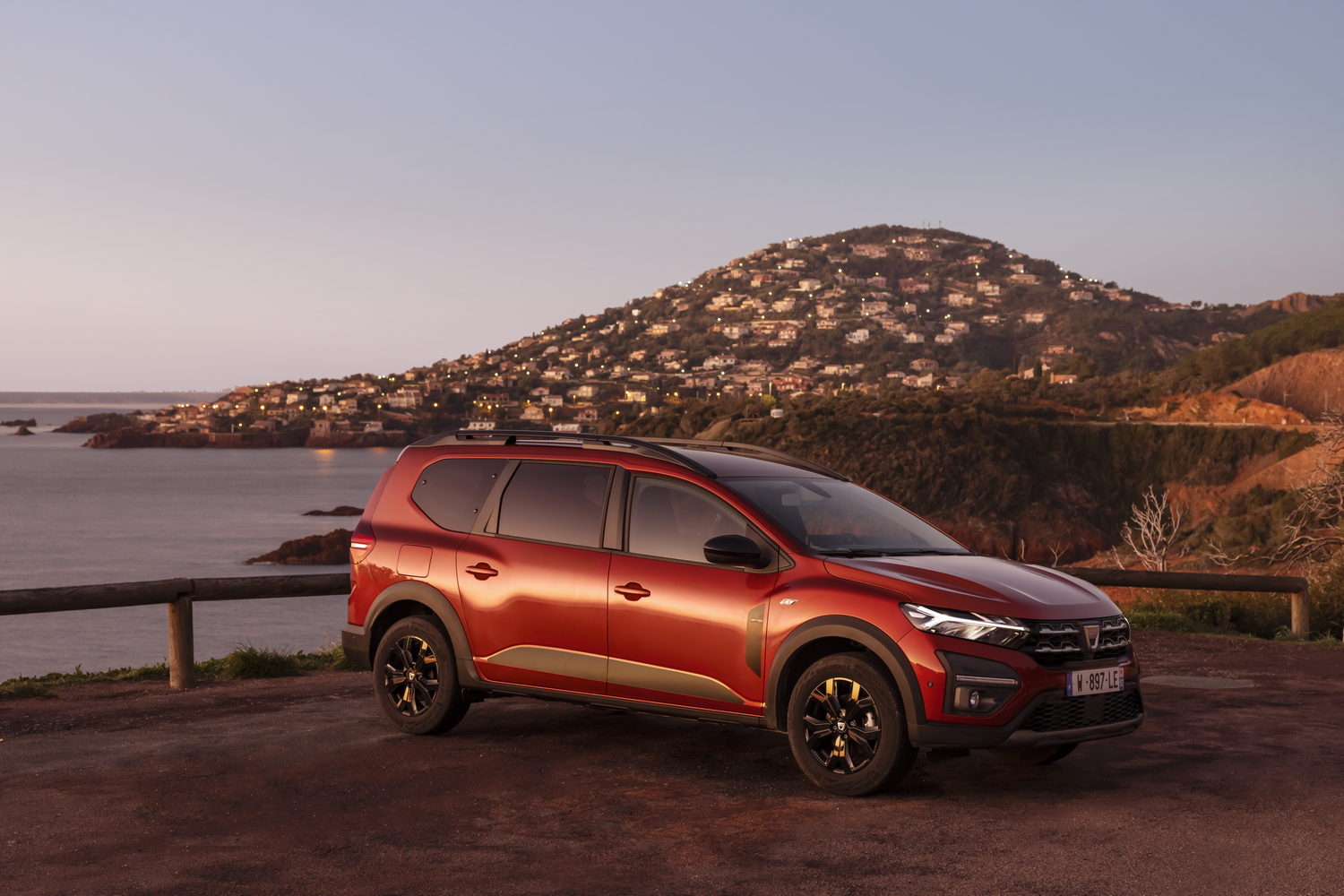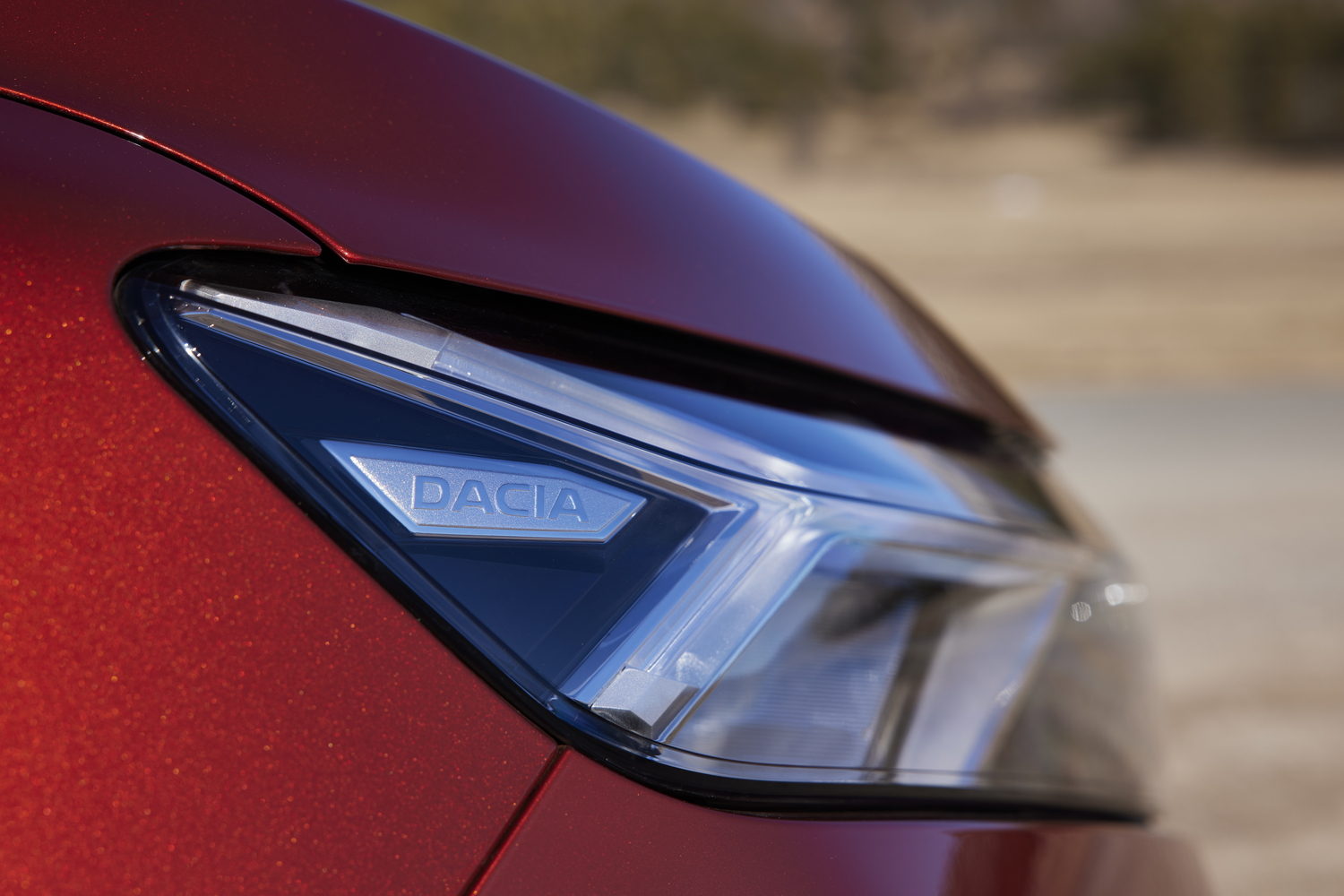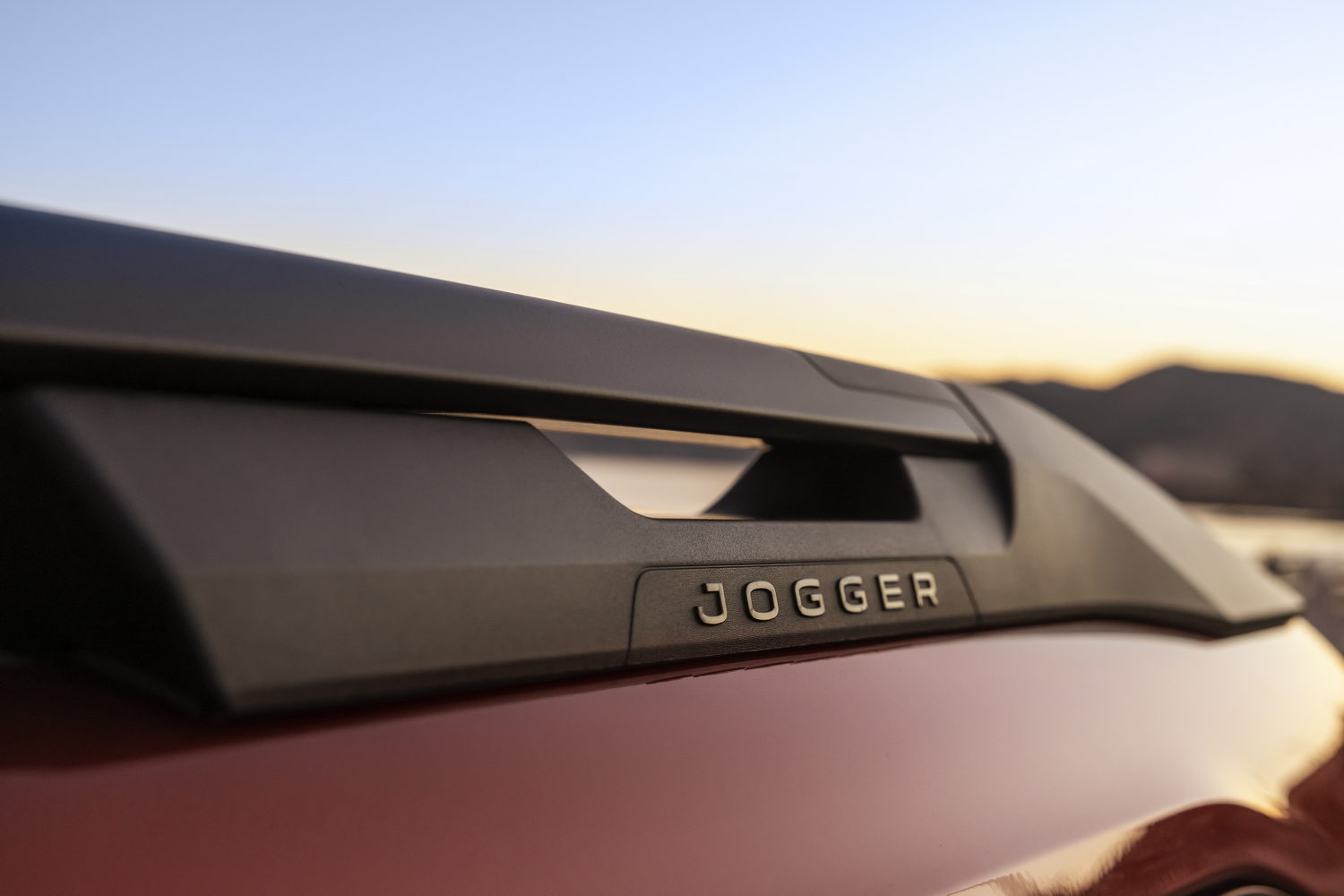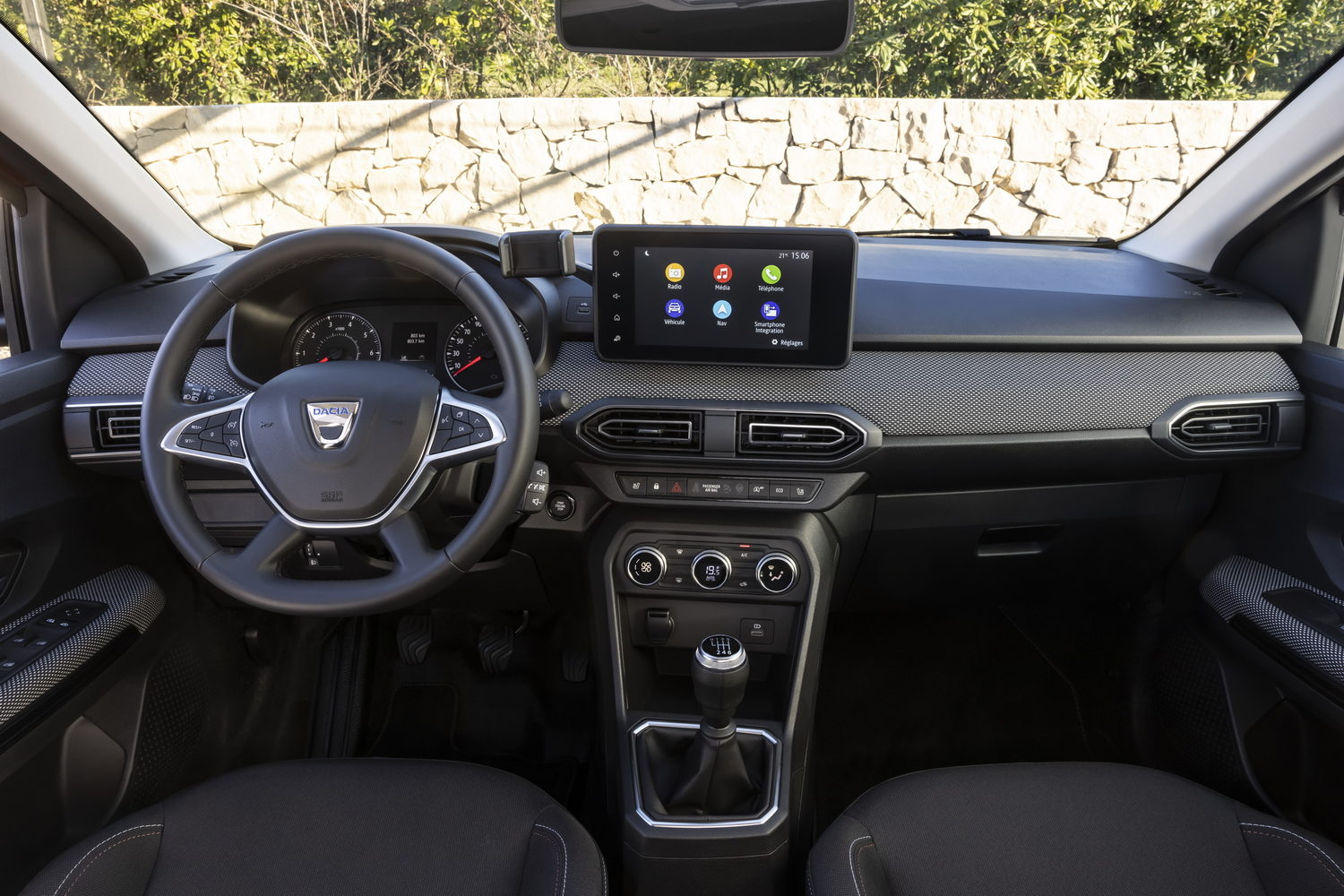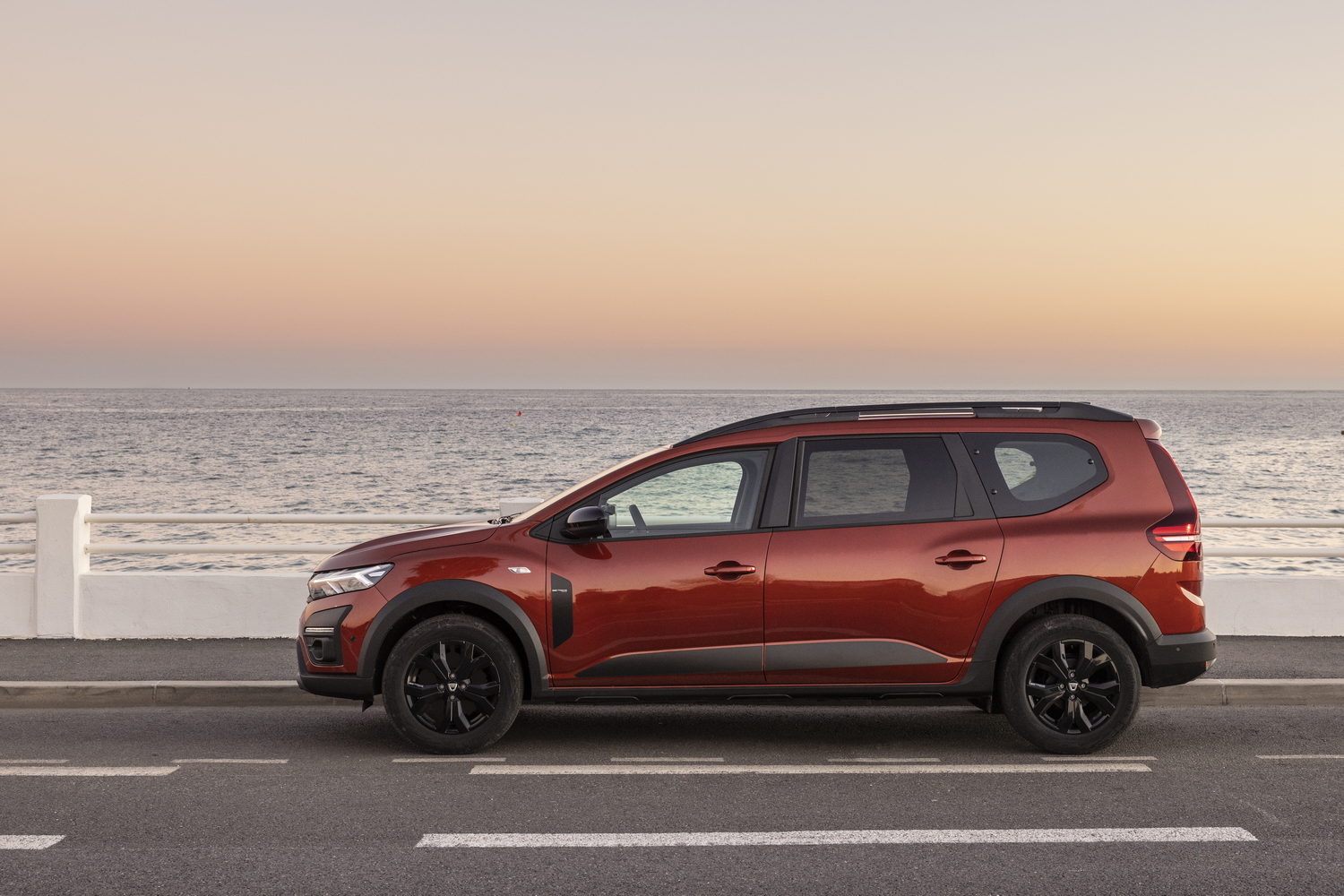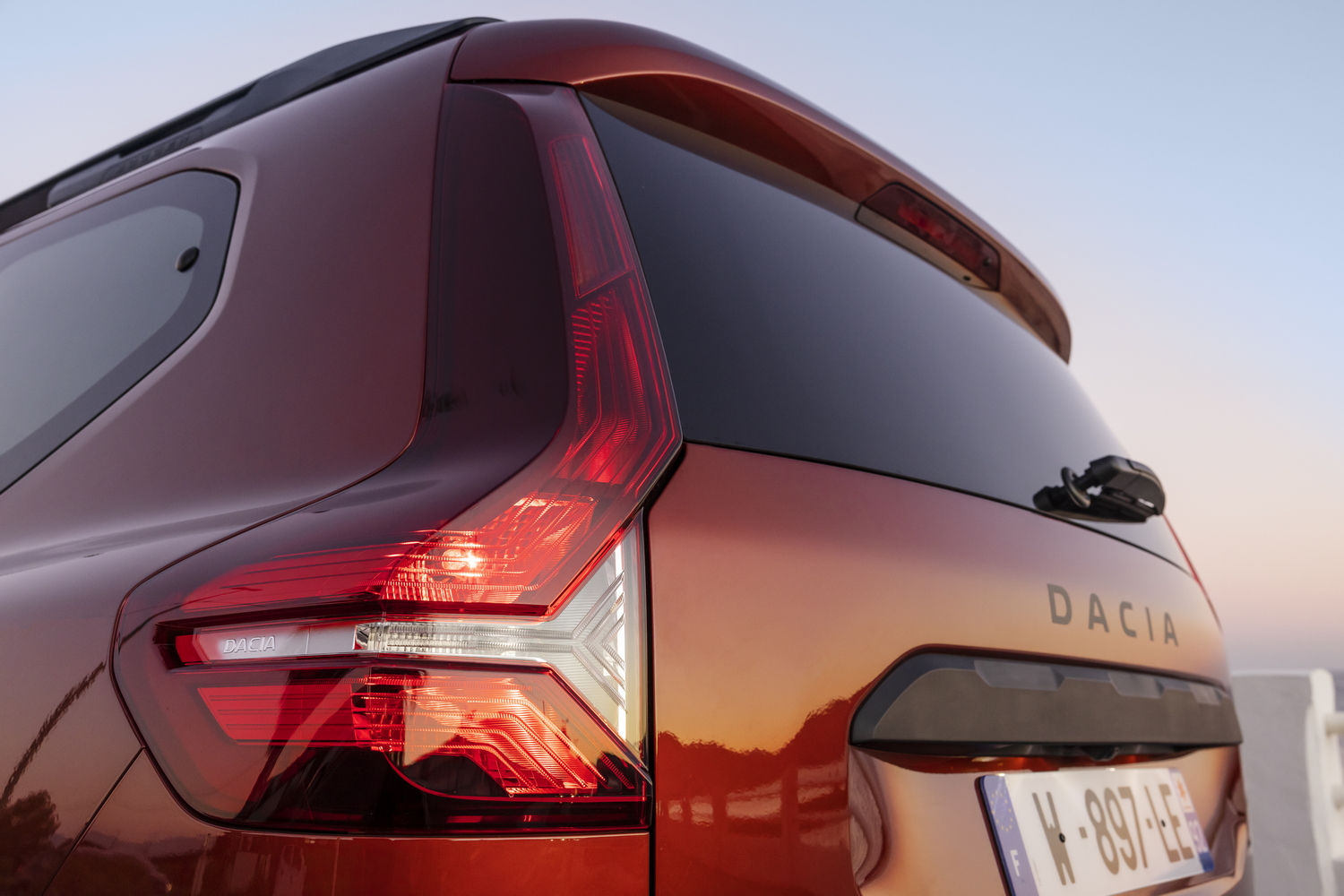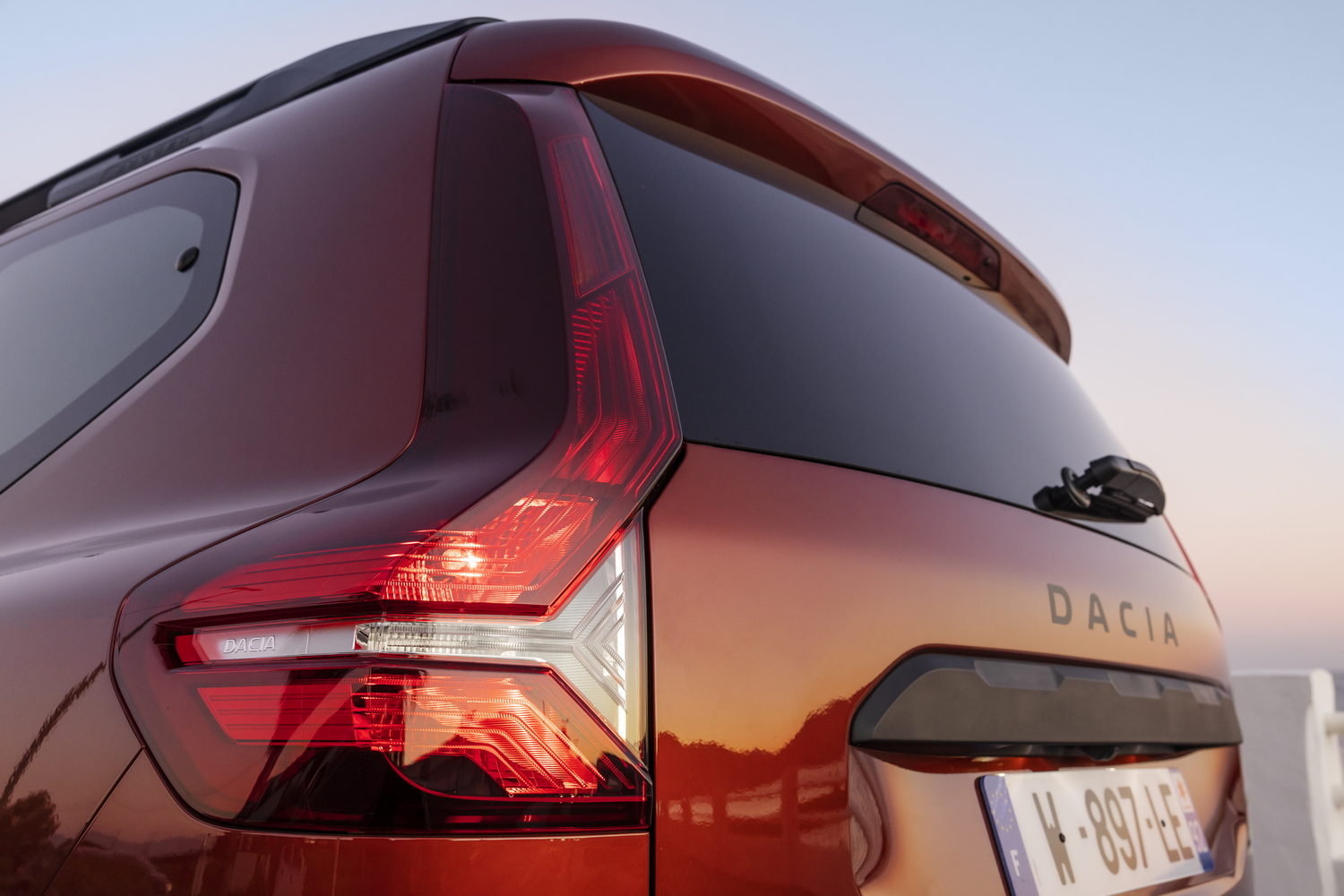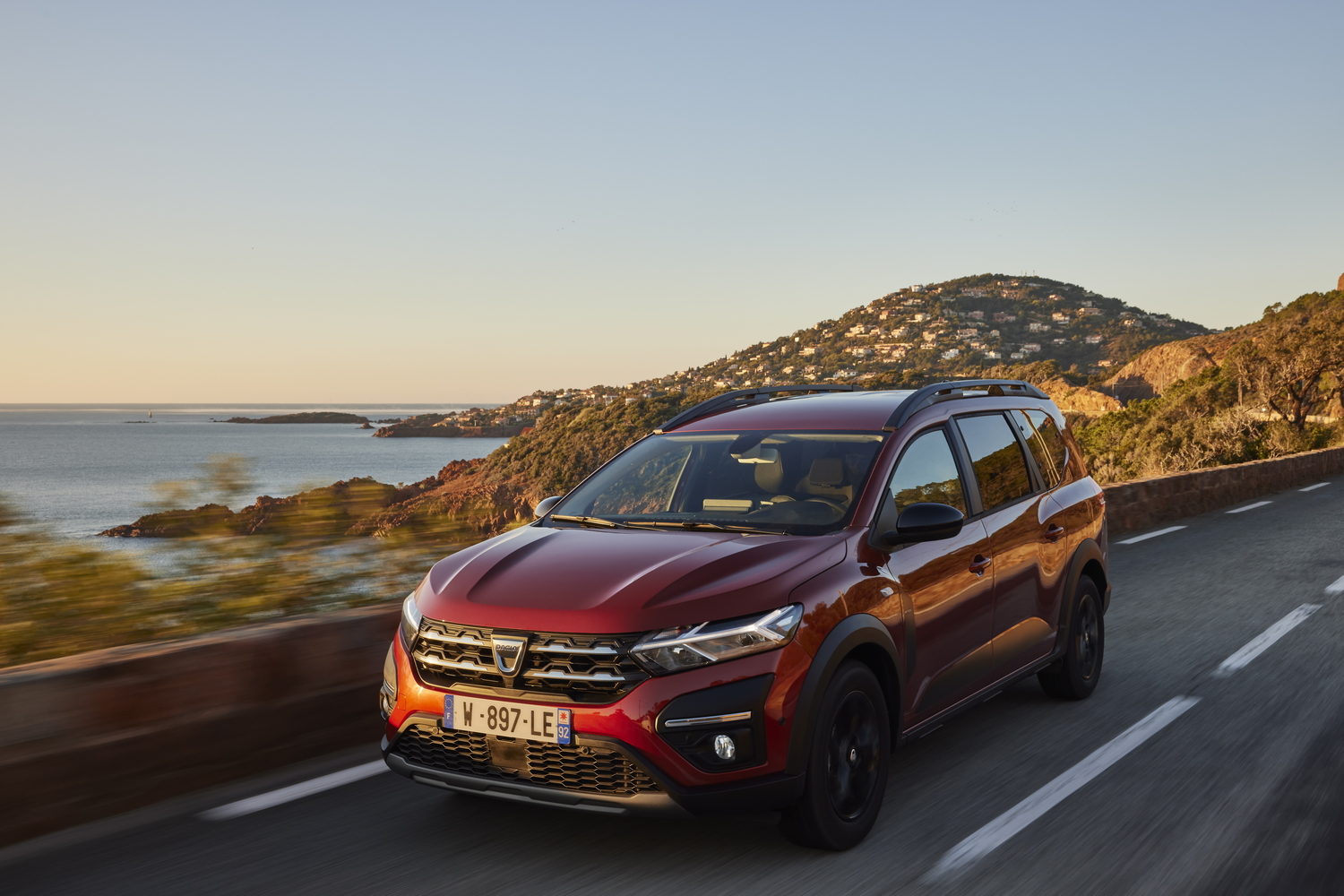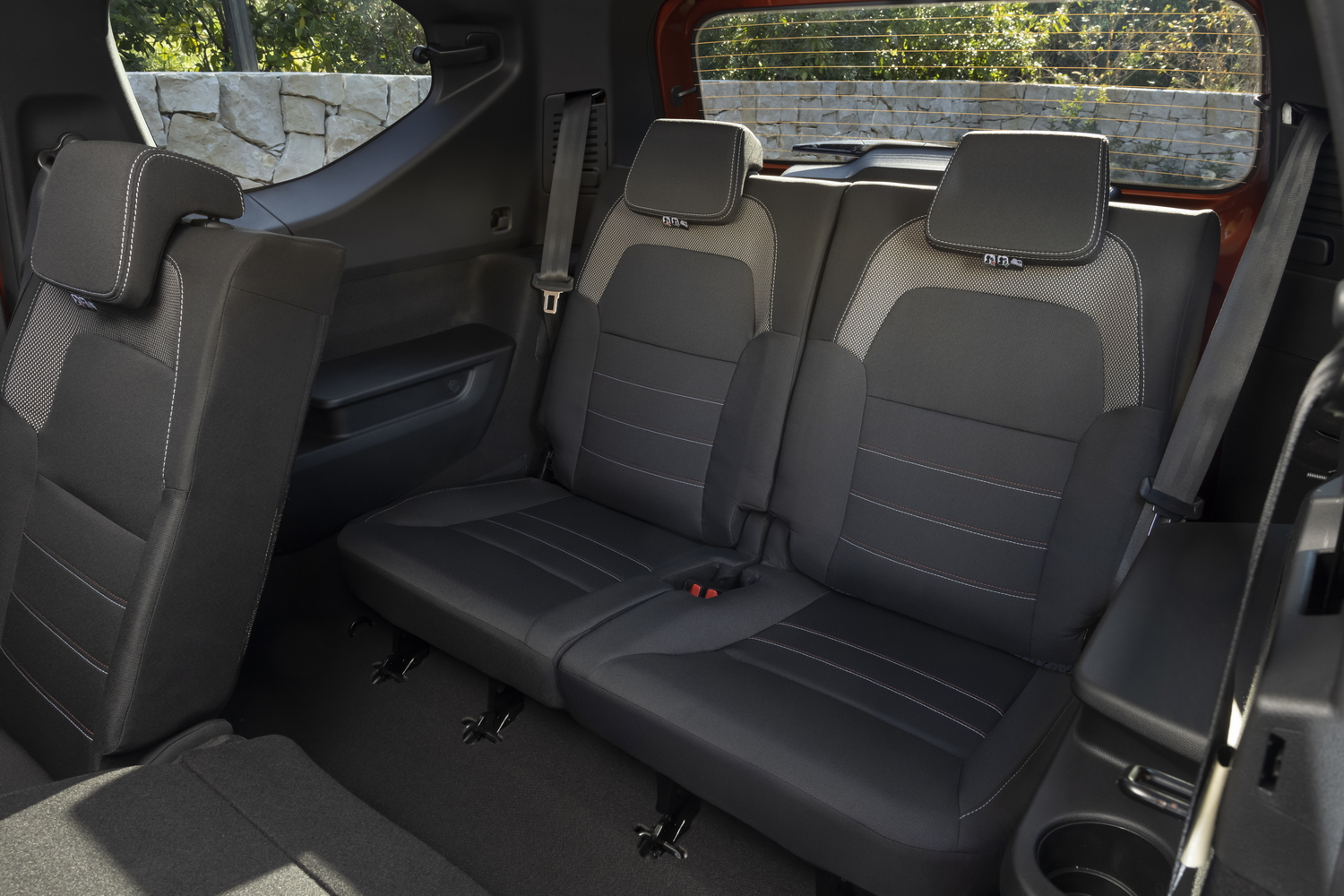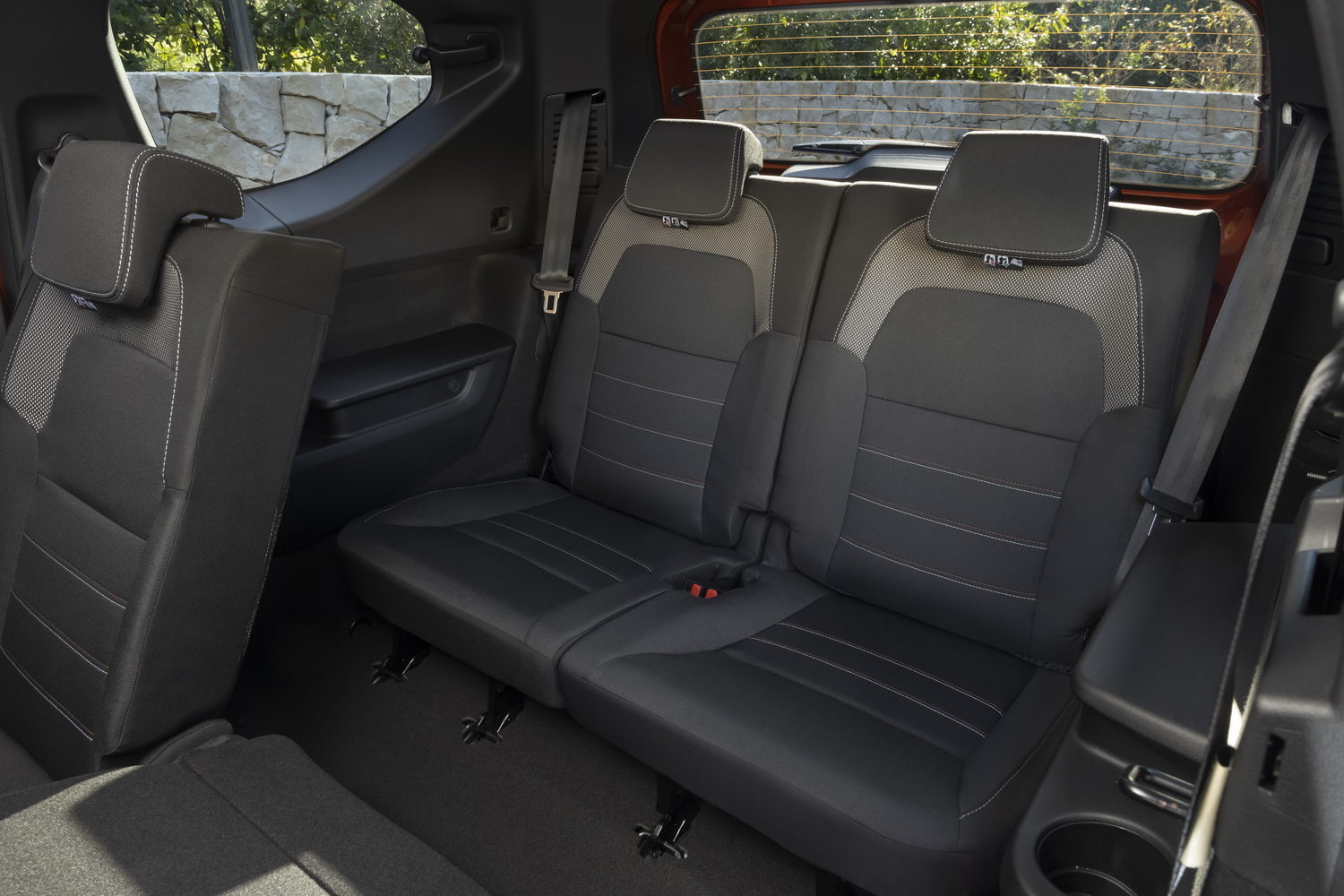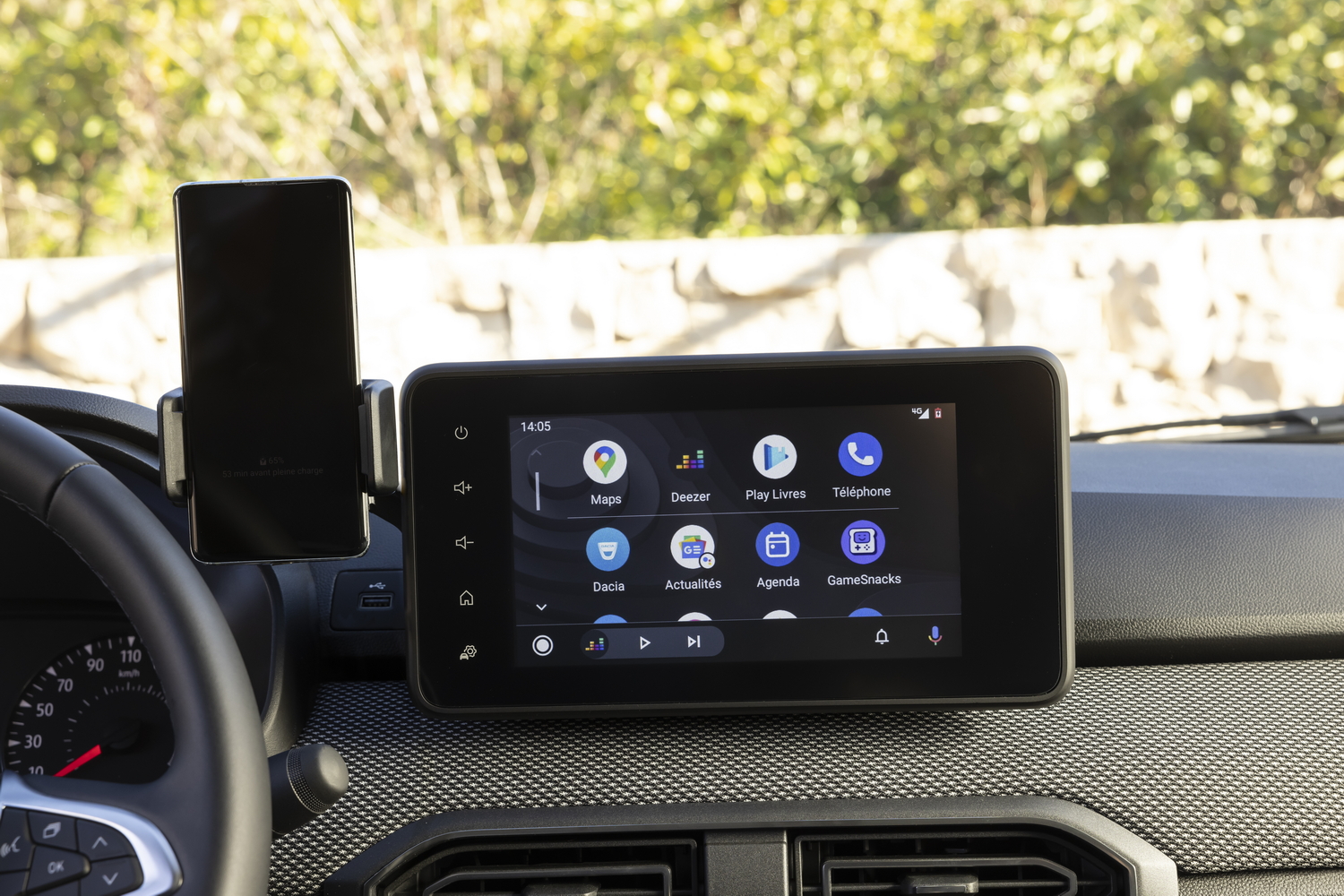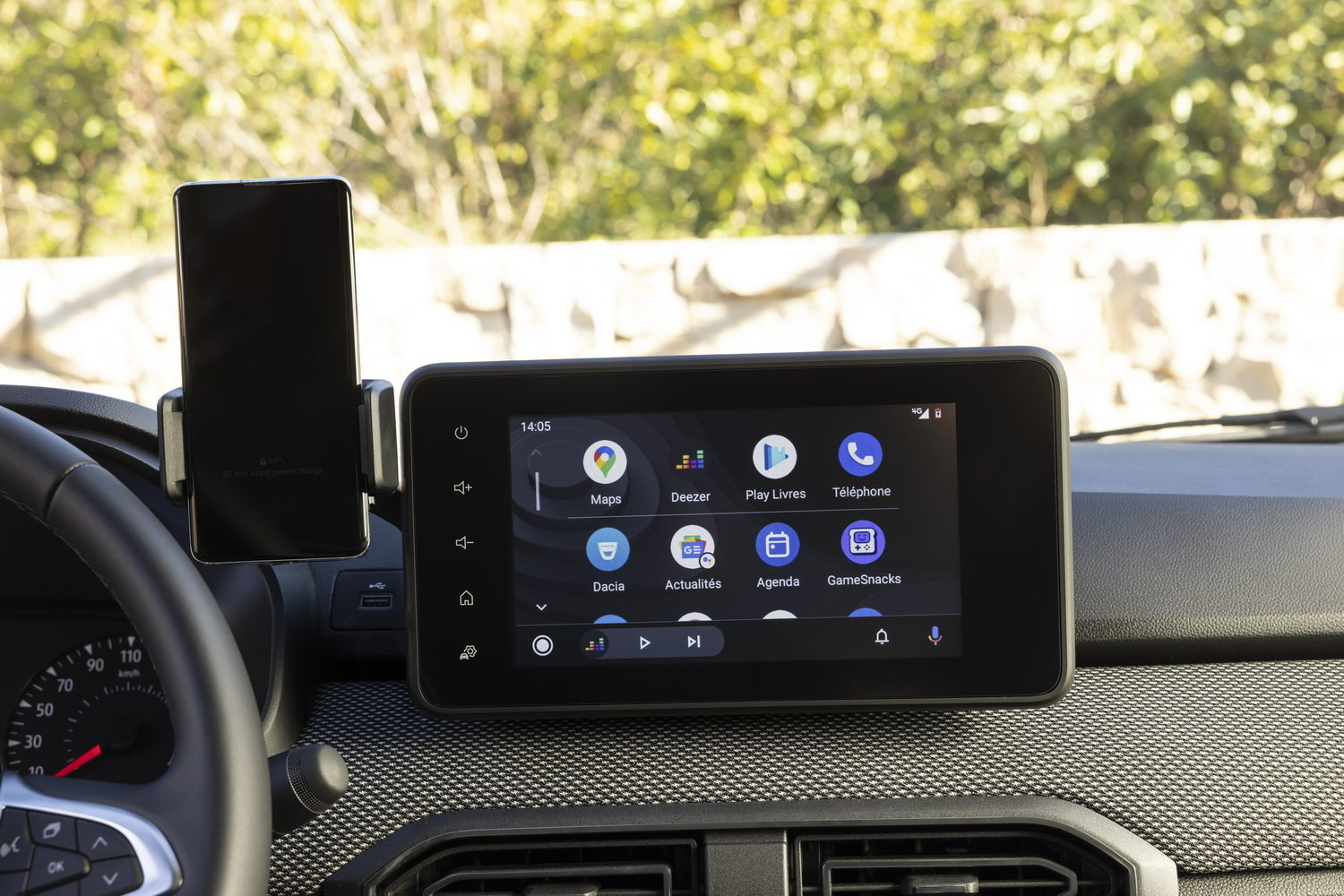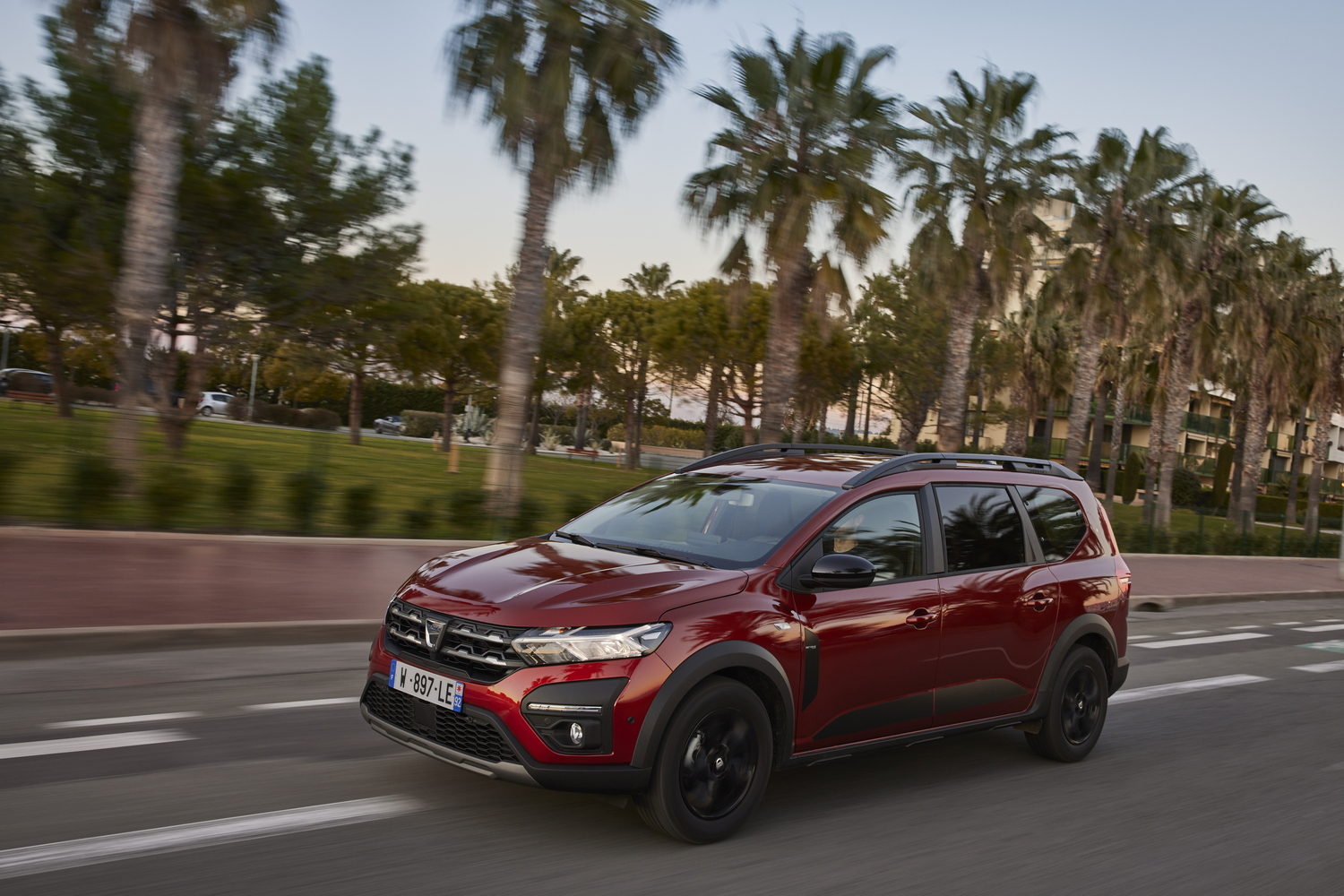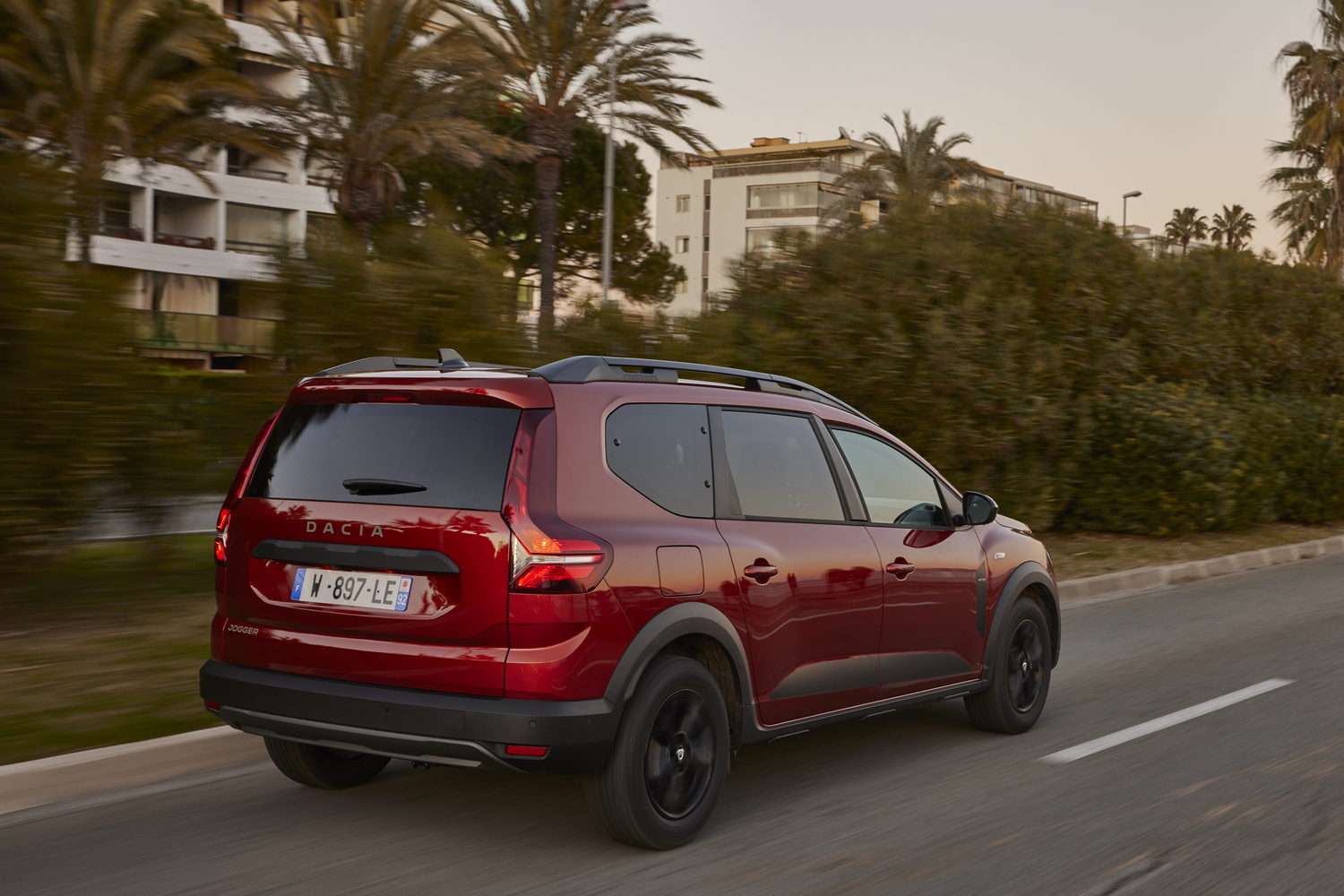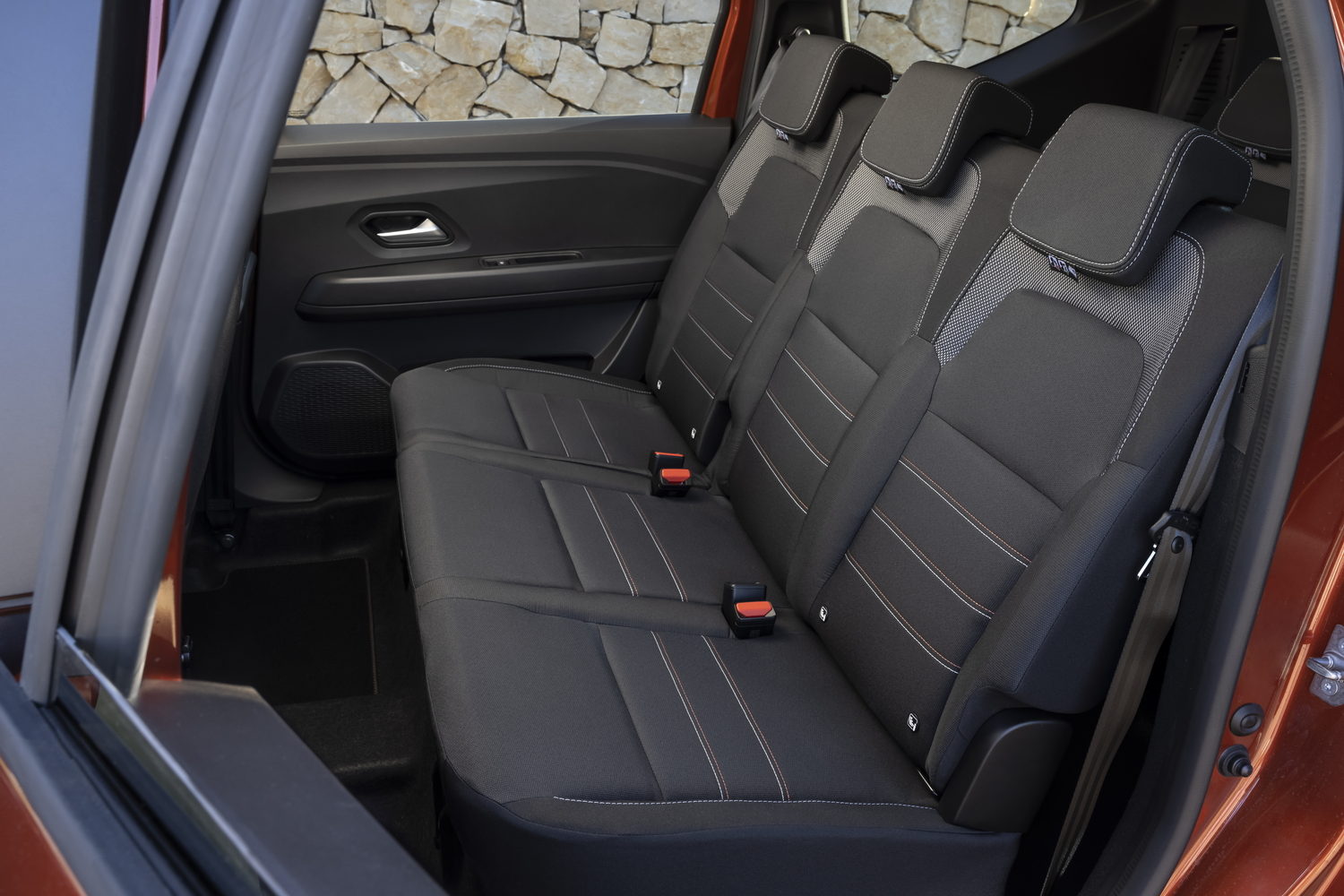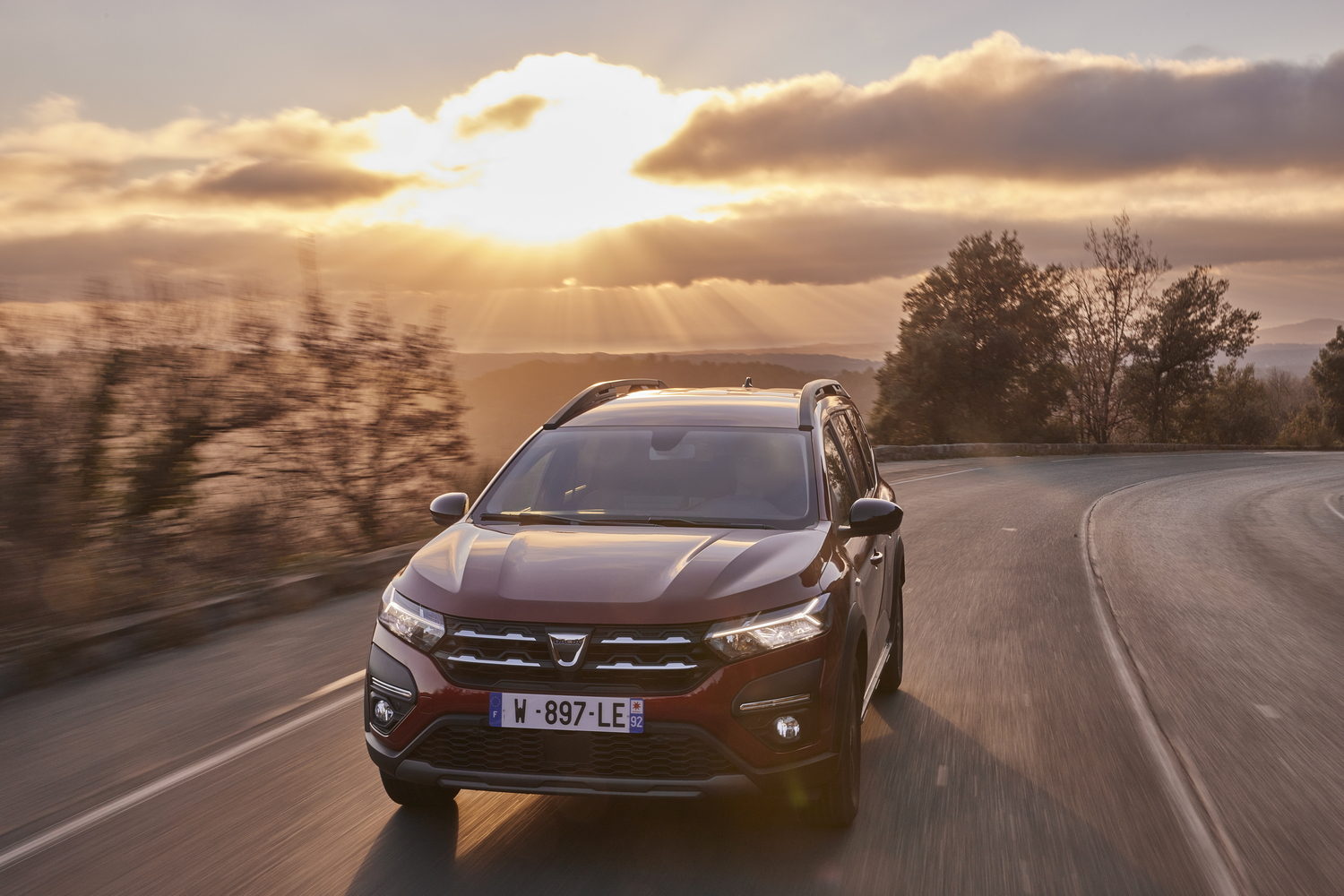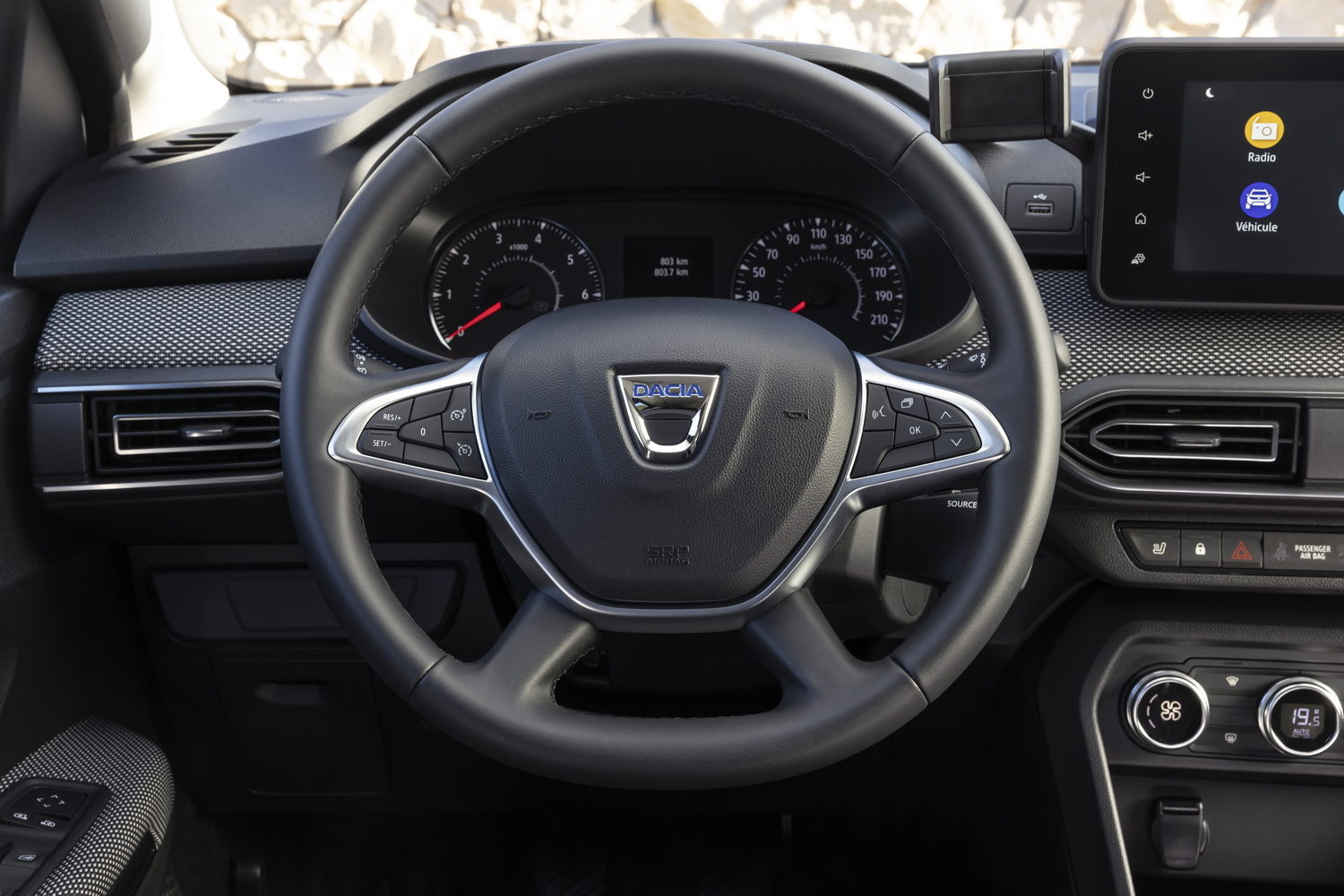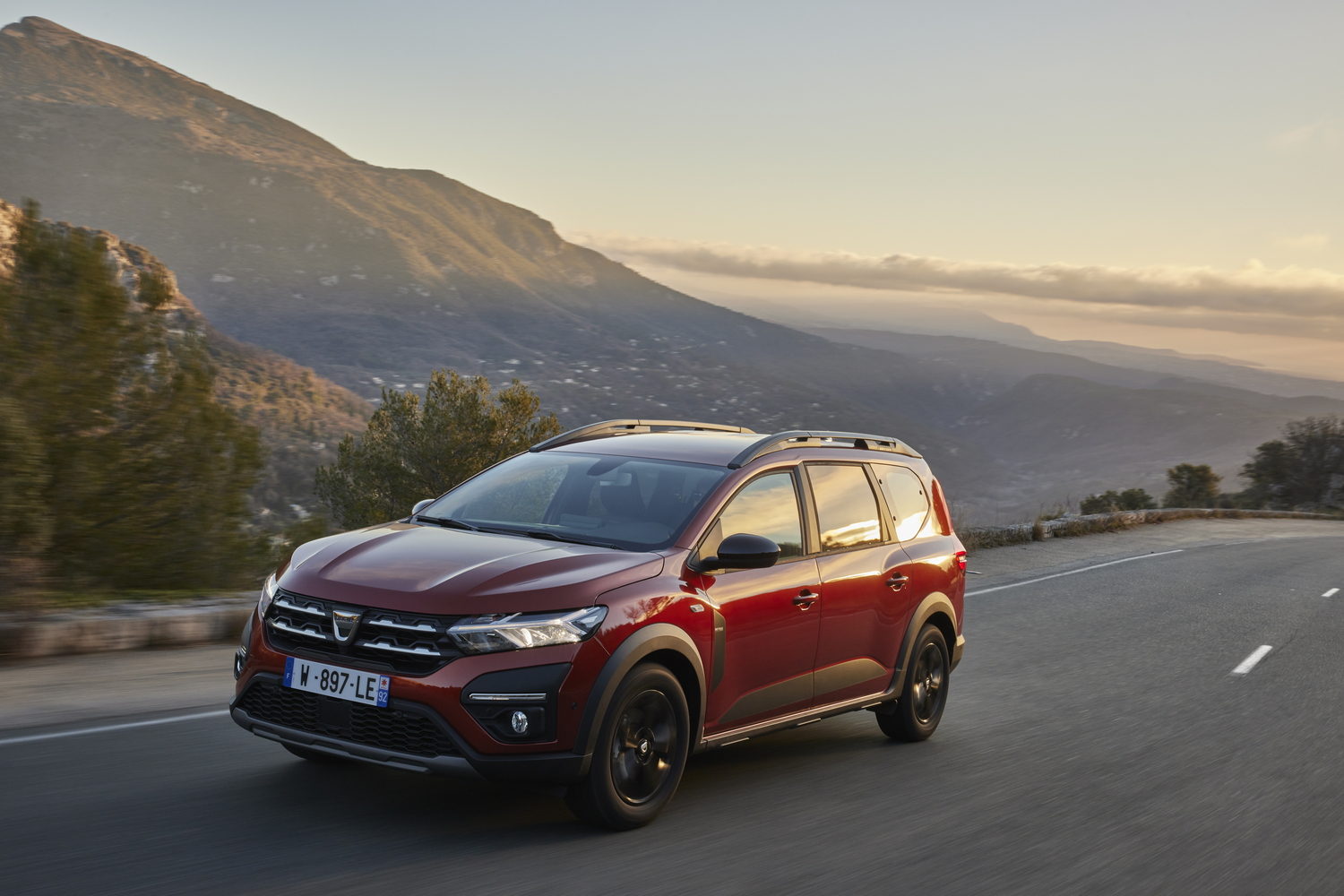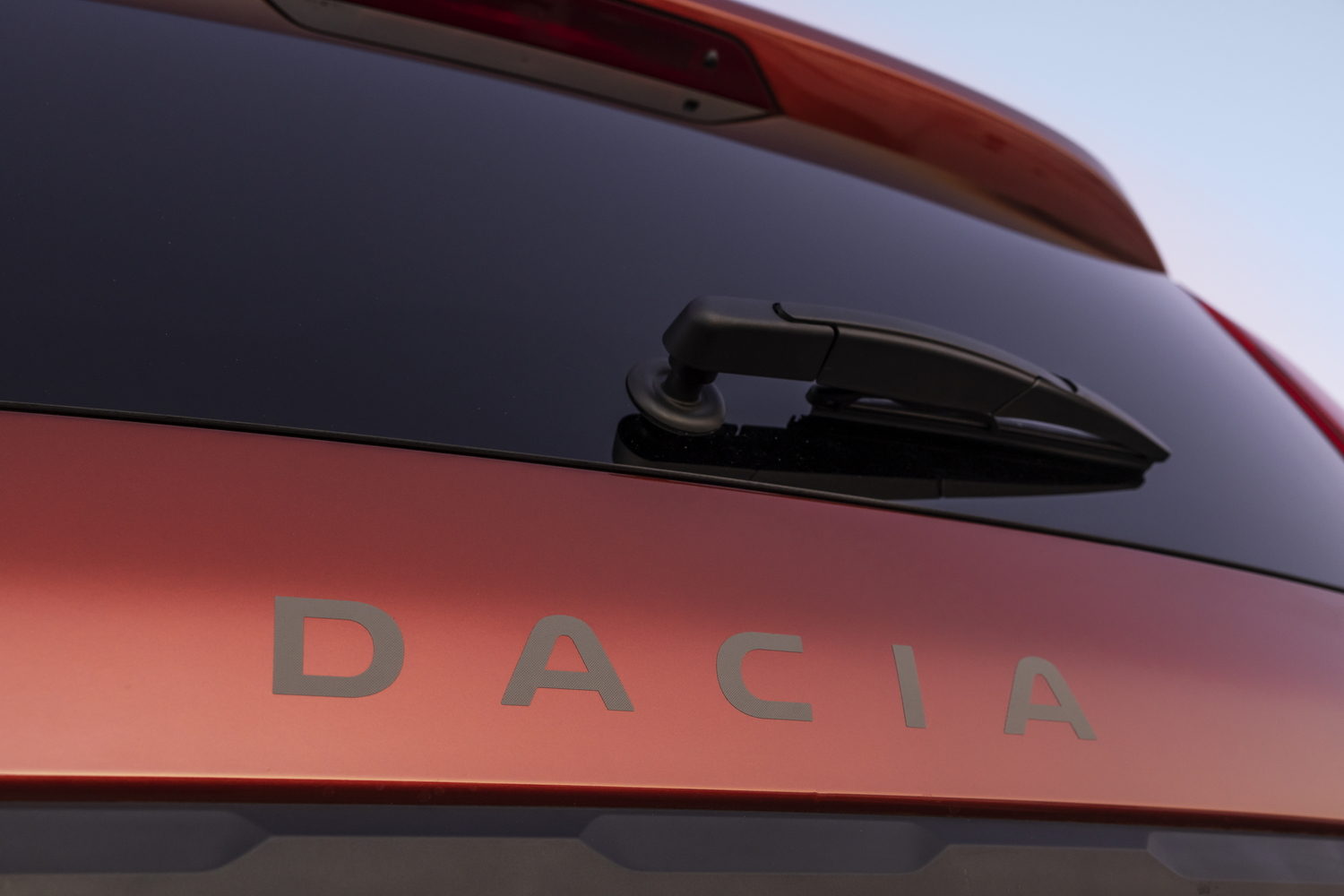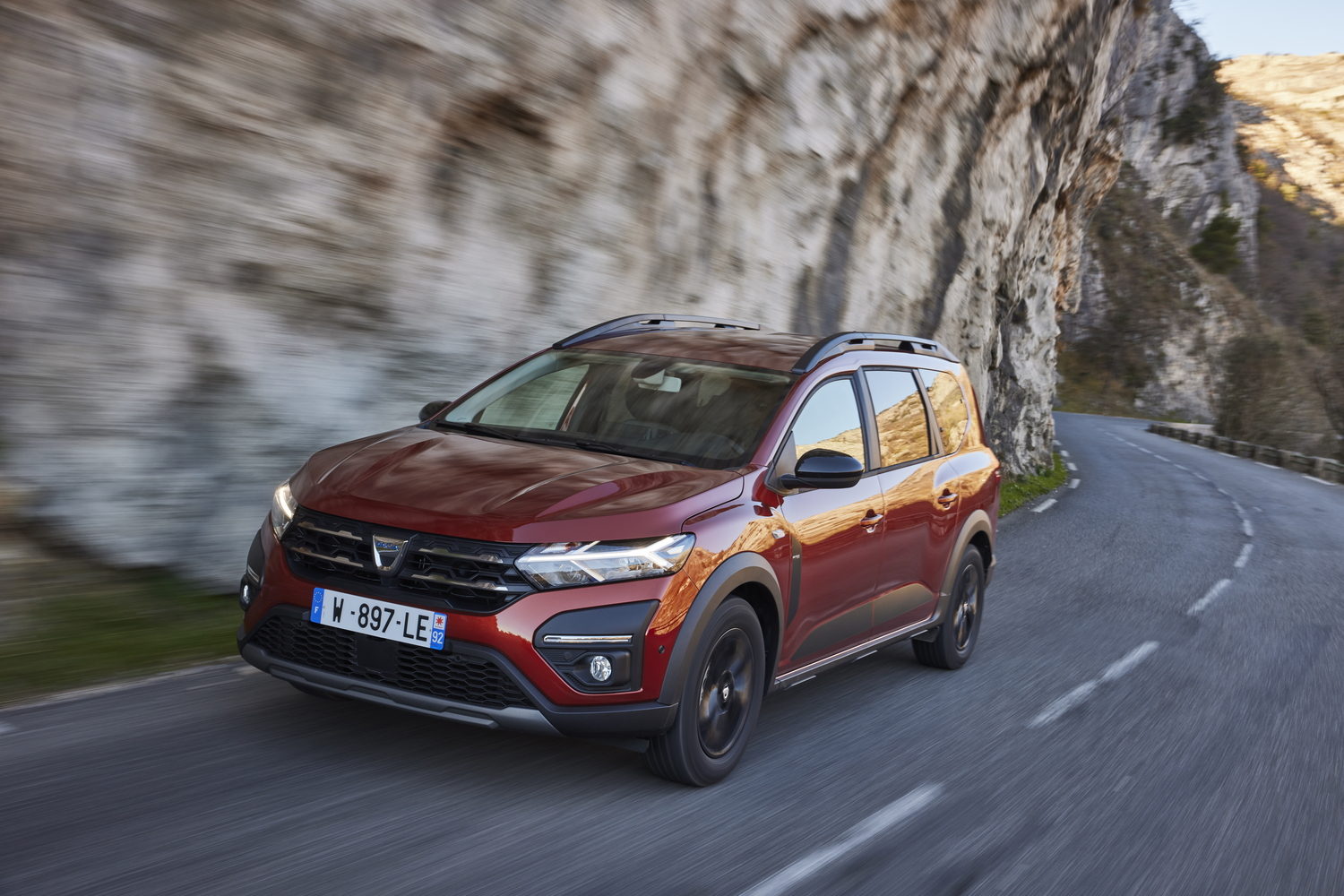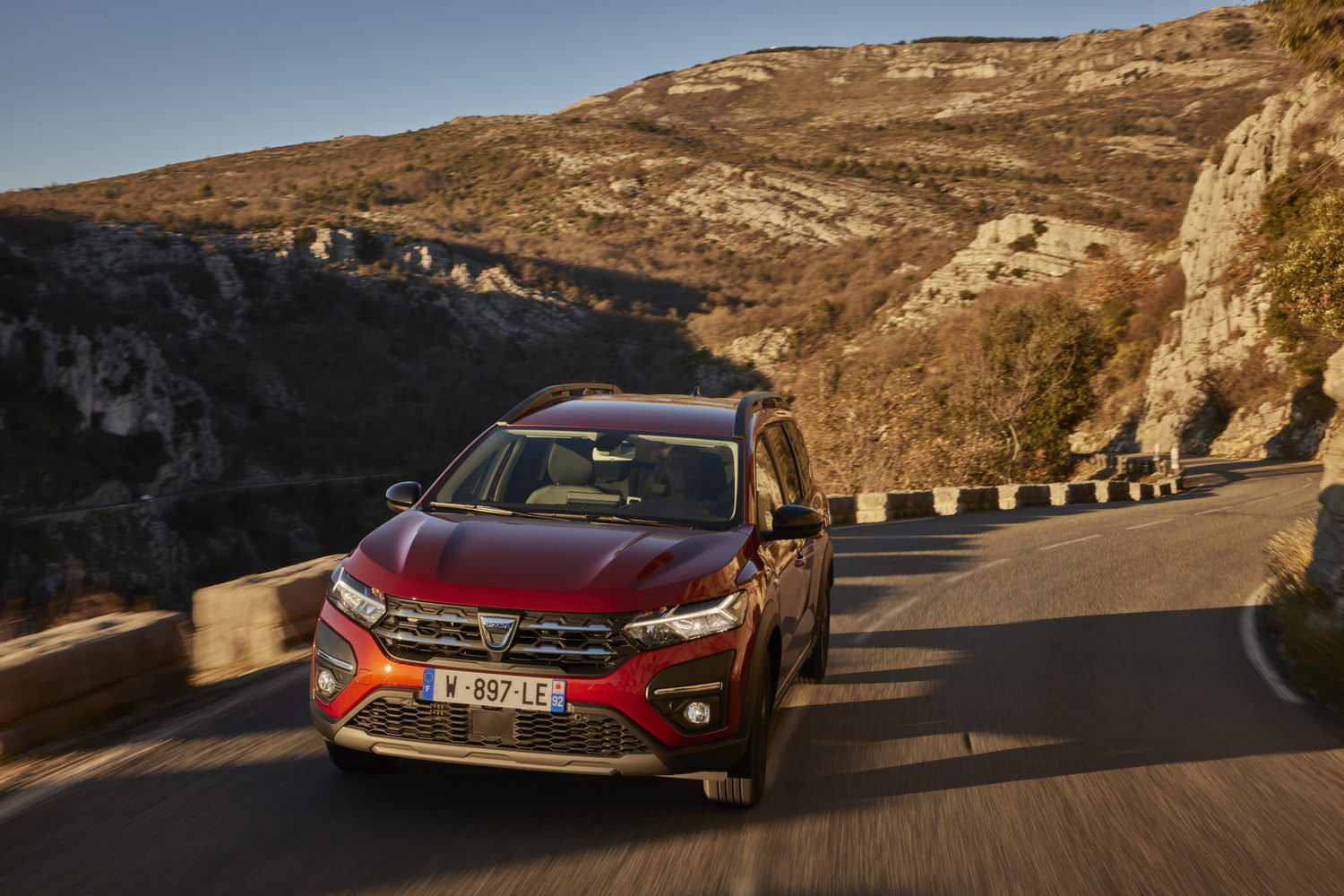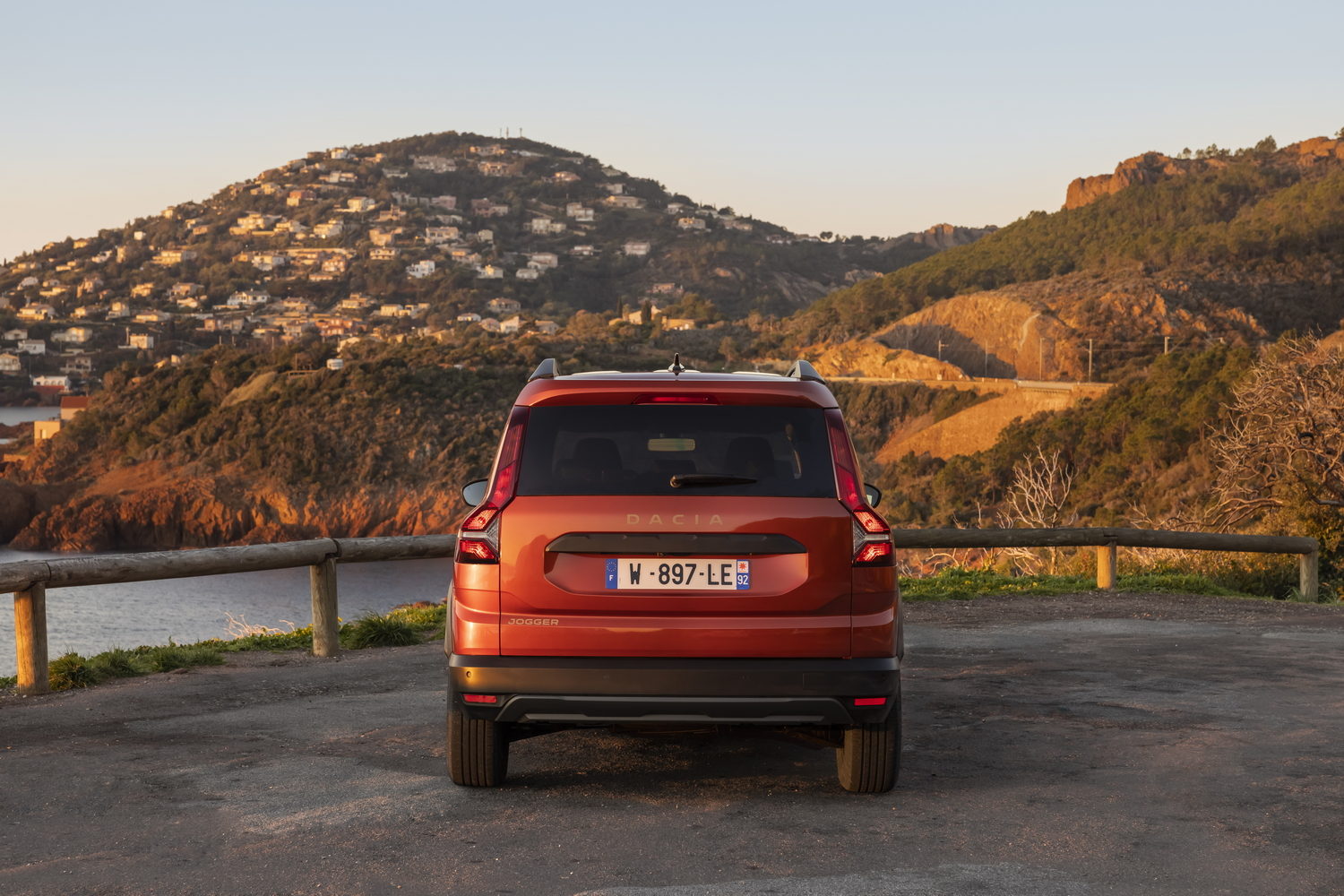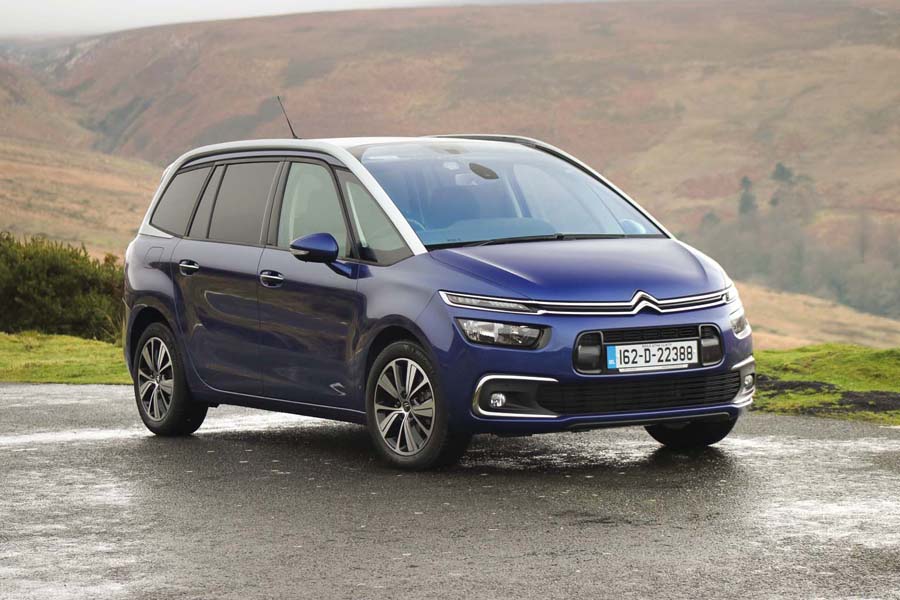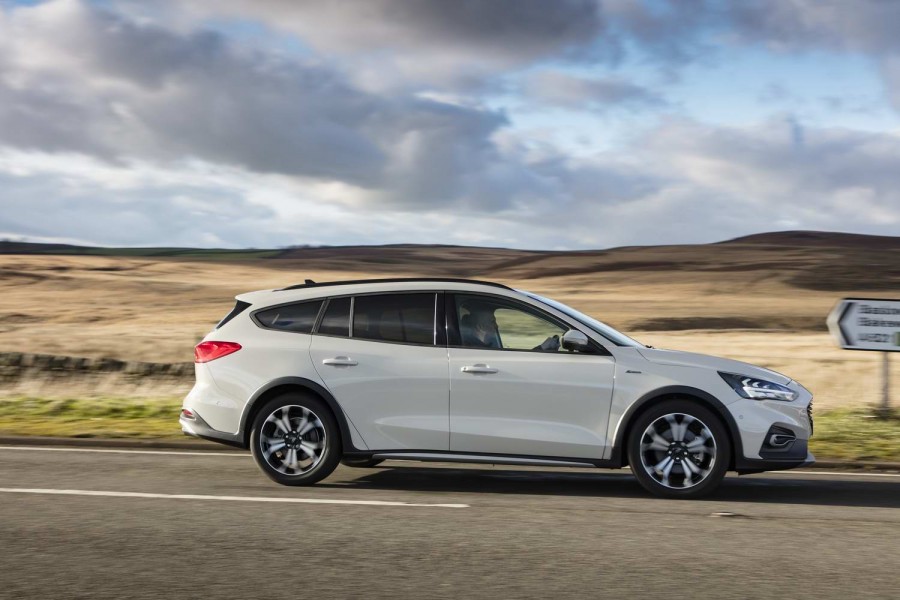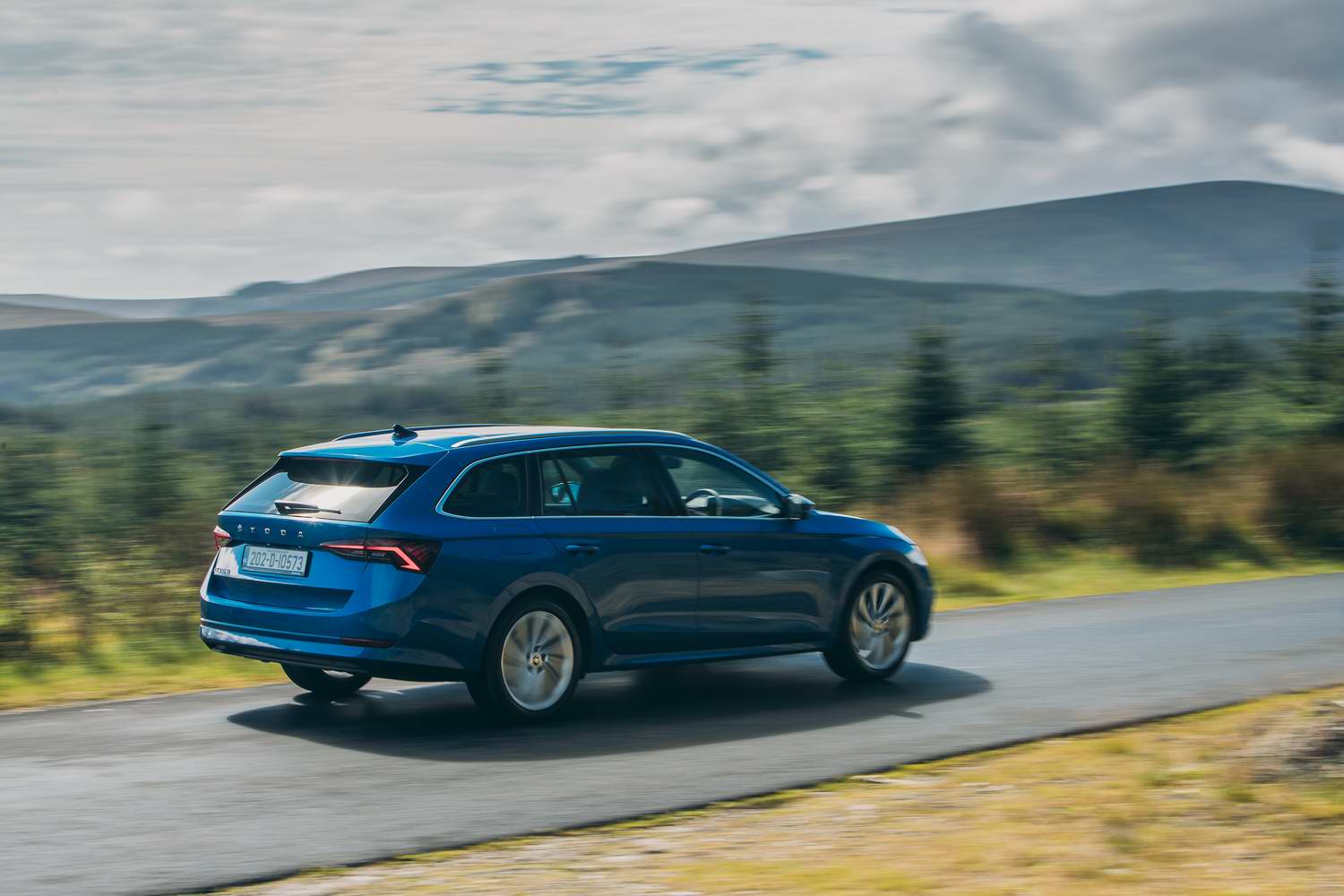Dacia has made its name building compact, practical and cheap cars for people that prioritise such things. Odd name aside, the new Jogger is the epitome of that attitude, offering a comfortable seven-seat car that's about the size of a Golf Estate on the outside, but offers the space of a people carrier inside. And it does it all from just €23,290. So is the Jogger cheap for a reason, or has Dacia created the best-value seven-seater on the market?
In the metal
Dacia says there's nothing quite like the Jogger, and we're inclined to agree. Here is a seven-seat, high-riding hatchback that's about the size of a compact estate car. Think Ford Focus Estate or Toyota Corolla Touring Sports. But with more seats, more space and a considerably lower price tag, the Jogger is short of natural rivals.
Not that it seems particularly bothered about that, striding into the market with some off-road-inspired looks, a bulky rear end and some surprisingly upmarket aspects - particularly in this range-topping, special-edition Extreme SE trim.
From some angles, the Jogger looks like a kind of melted Volvo XC70 (remember those?) with the tough-looking cladding and raised ride, but there's a more upright silhouette. From the front, we think it looks quite good, with creases in the bonnet and the latest Dacia grille. At the back, it's more Volvo XC90 with those taillights, but the squared-off tailgate is a bit van-like. We aren't sure about the step in the window line, either, which is there because the back seats are higher than those in the front to aid forward visibility, but it looks a bit disjointed.
However, the roof rails are a really clever feature. Unlike conventional rails, the Jogger's come with a little tool that allows the centre parts to be laid horizontally across the car and to clip into the opposite rail. That means there's no need to carry cross bars in the boot - they're simply part of the rails, and can be used to carry roof boxes and bike racks when needs be.
The cabin is similarly well thought through, with 23 litres of internal storage space and plenty of cubbies and bins for your odds and sods. The tailgate needs watching, though, because it's so long that it requires quite a lot of space to open. And in a multi-storey car park, it'll take the vehicle height over two metres when it's fully opened.
At least the boot is big, with 270 litres of space - a little more than you get in a city car such as a Hyundai i10 - when all seven seats are in place. Take the third row out altogether (each seat weighs about 10kg, so although this is a little fiddly it can be done alone) and that grows to just shy of 700 litres, which is enormous by any car's standards. The second row folds and tumbles to provide more than 2,000 litres of space, which is getting on for van levels. Unfortunately, though, the boot floor is only really flat in the seven-seat configuration.
Passenger space is also good, with the tumbling second row allowing for easy access to the two rearmost seats and acceptable space in all five back seats. We fitted two out-of-shape motoring journalists, both measuring more than 1.85m in height, into the back with few complaints. Long journeys might be a bit uncomfortable, but for half an hour or so it wouldn't be an issue at all. Kids will be more than happy back there.
For those in the front, life is a little less impressive, but no less comfortable. The seats are good, there's some nice fabric upholstery on the dashboard and although some of the plastics feel cheap and look drab, what do you expect from a car that's so inexpensive? And with the backing of Renault, Dacia has at least managed to make the car feel relatively well built, despite some of the sub-par materials.
The mid-range and top-end models are expected to be the big sellers, and both come with touchscreen infotainment systems that work perfectly well. Both have Android Auto and Apple CarPlay as standard, which makes them extremely easy to use, but even without a smartphone to plug in, they're far from the worst systems on the market. They look modern and functionality is far better than the screens found in other budget models such as those from Suzuki and MG.
Driving it
The Jogger will go on sale with a choice of two engines, and a hybrid version is set to arrive in 2023, but for the time being it's the 1.0-litre TCe 110 petrol engine or nothing. A turbocharged three-cylinder unit with 109hp and a six-speed manual gearbox, it provides adequate performance - with an 11.2-second 0-100km/h time - if nothing more. It's enough to make motorway miles bearable without ever encouraging fast driving. But that's not what the Jogger is all about. This is a car for sensible people - those who are much more interested in fuel economy and emissions.
Those customers might be better off waiting for the hybrid to arrive, but burning through six litres of unleaded every 100km isn't bad for a seven-seat family car. Admittedly, the lack of punch might mean that figure rises slightly in the real world, but the Jogger certainly won't prove too ruinous to run.
And because Dacia cares about the things that matter, the Jogger is also wonderfully comfortable and easy to drive. We'll have to reserve full judgement on the ride until we've driven it on more representative roads, but our French test revealed supple, absorbent springs that iron out imperfections with ease. Even during a bit of light off-roading - the lack of an all-wheel-drive option means you can't ask too much - the Jogger proved surprisingly comfortable and composed. With 200mm of ground clearance, we suspect some really good, weather- and surface-appropriate tyres would make this thing more than capable enough for most drivers.
Although the car rides high above the road, body lean in corners is not outrageous, and the Jogger feels secure in the bends. There's a good amount of grip and the steering feels fluid and confidence inspiring. It's definitely no hot hatchback, but it's a very pleasant and agreeable thing to waft about in.
When we say waft, we mean it, too. The engine is only noisy when pushed, at which point it has quite a characterful beat, and road noise is relatively well subdued. It isn't a Rolls-Royce, but for a budget family wagon it isn't bad at all.
What you get for your money
The Jogger exists to provide terrific value, and a seven-seat car that starts at €23,290 certainly provides that. For that money, you just get the basic Essential model, with its rear parking sensors, smartphone mounting point and manual air conditioning, but not an awful lot else. Cruise control and automatic headlights more or less round off the list.
Step up to the Comfort model and you get alloy wheels, the clever roof bars and front parking sensors, as well as a reversing camera, keyless entry and an eight-inch touchscreen display with the Apple CarPlay and Android Auto technology. Climate control and automatic windscreen wipers are also thrown in, making the €25,090 asking price look like immense value. It would be our pick of the line-up.
But Dacia is also offering this Extreme SE model until the autumn of this year. Priced from €26,590, it features black alloy wheels, grey skid plates and black-painted door mirror housings, as well as Jogger-branded floor mats, heated front seats and navigation. It's expected to be among the top sellers, and it could continue (possibly with tweaks or under a different name) beyond the end of 2022 if it's as popular as Dacia predicts.
And if you have designs on buying one of these, then adding a few optional extras, forget it. The only options you can choose are the paint colours. And yes, the Terracotta Bronze seen here is the one to go for.
Summary
We love the Dacia Jogger. There's a lot to be said for a seven-seat family car that's pleasant to drive, spacious and cheap, and even more to be said for one with decent build quality and equipment levels. There's also a real charm to its unassuming honesty. We don't expect it to be a hit with image-conscious customers, but those who buy cars entirely with their heads will find plenty of reasons to get one. It might not be the car most people want, but it is all the car they need.

